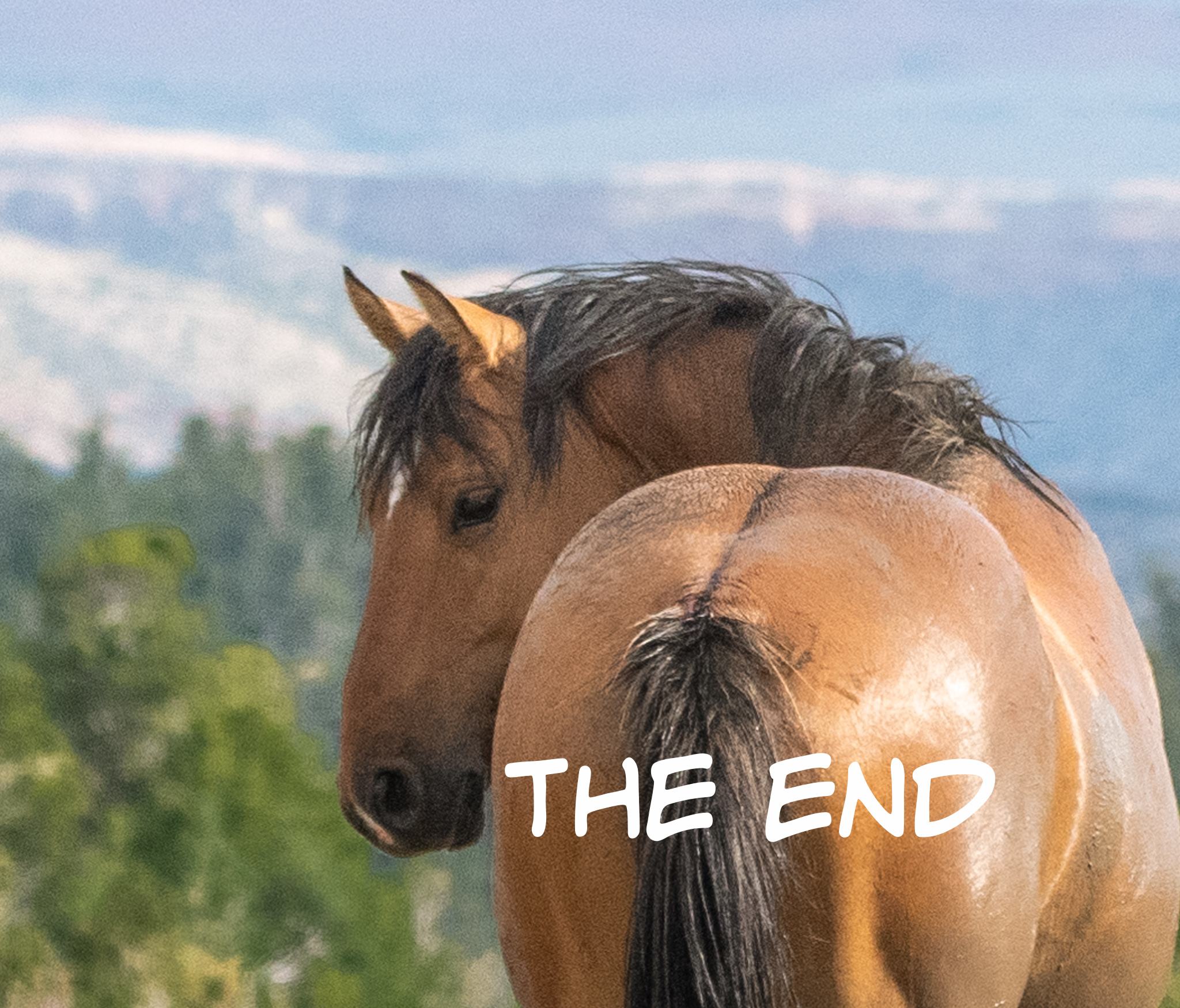Wild Horse Heaven...in the Pryor Mountains
"I am a drinker of the wind. I am the one who never tires.
I love my freedom more than all these things."
lryics by Ian Tyson
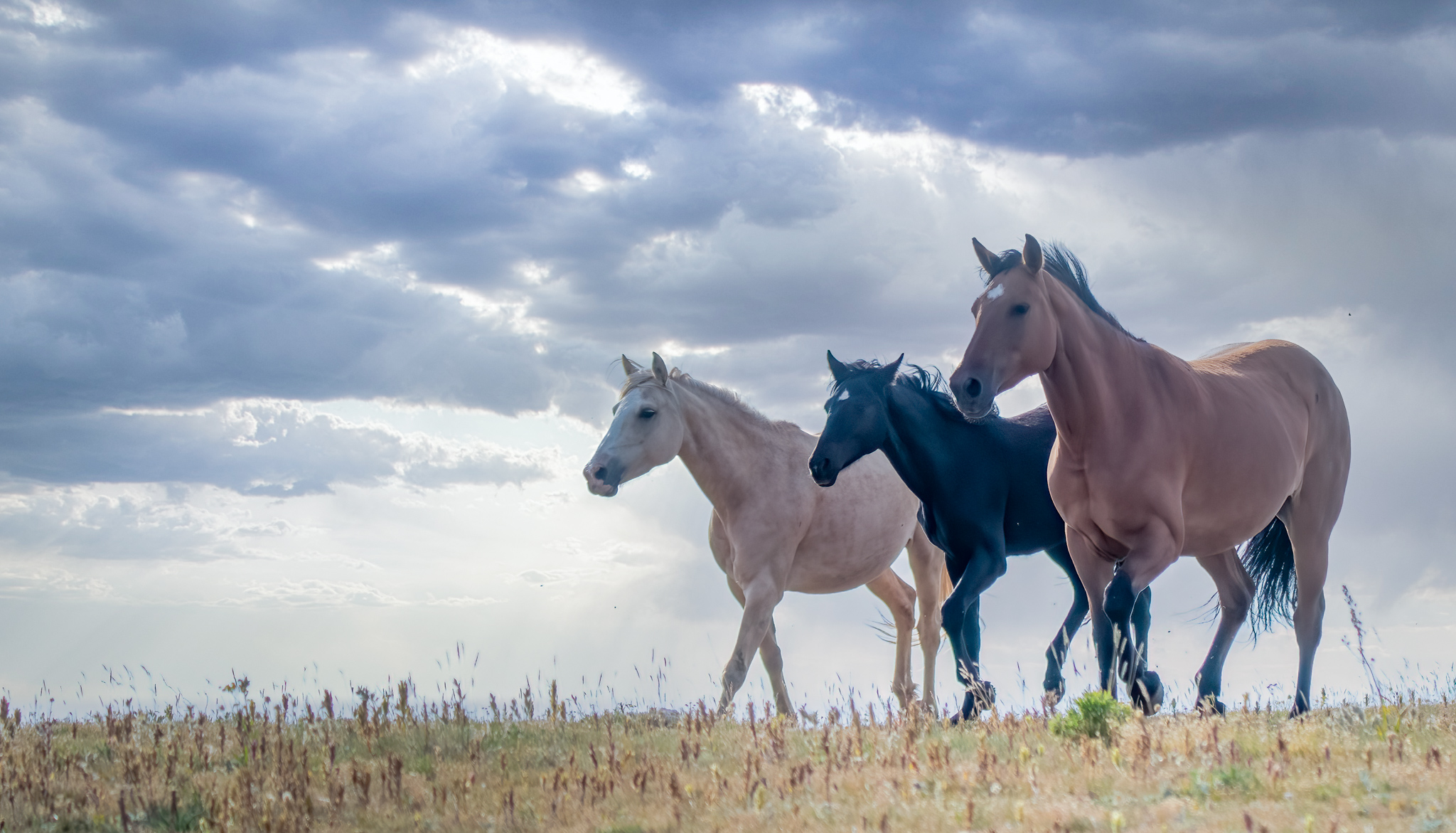
The Pryor Mountain wild mustangs are a federally protected herd along the Montana-Wyoming border and the first federal wild horse range to exist. The 31,000-acre refuge, adjacent to the Big Horn Canyon National Recreation Area, is home to
an estimated 120 to 160 wild horses.
Now that I have photographed Montana, I can say I have photographed wild horses from 14 different states. If my research is correct, there are 17 states that have wild horses. Many of the wild horses I have photographed are 'true' mustangs as documented through genetic testing. Other wild horses may have a diluted lineage to the old mustangs of hundreds of years ago. Still others are descendents of horses who were turned loose during the depression or escaped their owners. Their relation to the old mustangs may or may not have been established. Regardless, any horse that is 'feral,' and must survive without human intervention is a horse I would consider wild, though I recognize they may be descendants of domesticated stock. People have differing opinions about what is wild versus what is feral and if there is a difference between the words. My mission is to photograph horses that are not owned by anyone and roam freely and there is no or minimal human intervention in their lives. These are what I call 'wild.' However, it is most exciting to photograph the horses that have a definite link to the wild horses from centuries ago.
These Pryor mustangs have had extensive DNA testing and they are for certain genetically linked to the Spanish colonial horses brought to North America by Hernando Cortes in 1519. My reaction to these particular horses was one of intrigue, astonishment, and reverance. There were two characteristics of these horses that jumped out to me as being different from many of the other wild horses I have photographed. The first unique characteristic I noticed was their little ears, and the next thing I noticed was their broad forehead giving their head a boxy, chunky appearance. I found these horses in general, particularly the stallions to have rugged, angular facial features.
I did some research and found these first two characteristics were indeed specific to the old Spanish mustangs from centuries ago. Also unique to these mustangs is their tapered muzzles and deep but narrow chests. They are small, in stature, averaging 13 to 15 hands. Something I did not know but is evidence of their link to the original Spanish mustangs, is they have five large lumbar vertebrae, while most modern breeds have six.
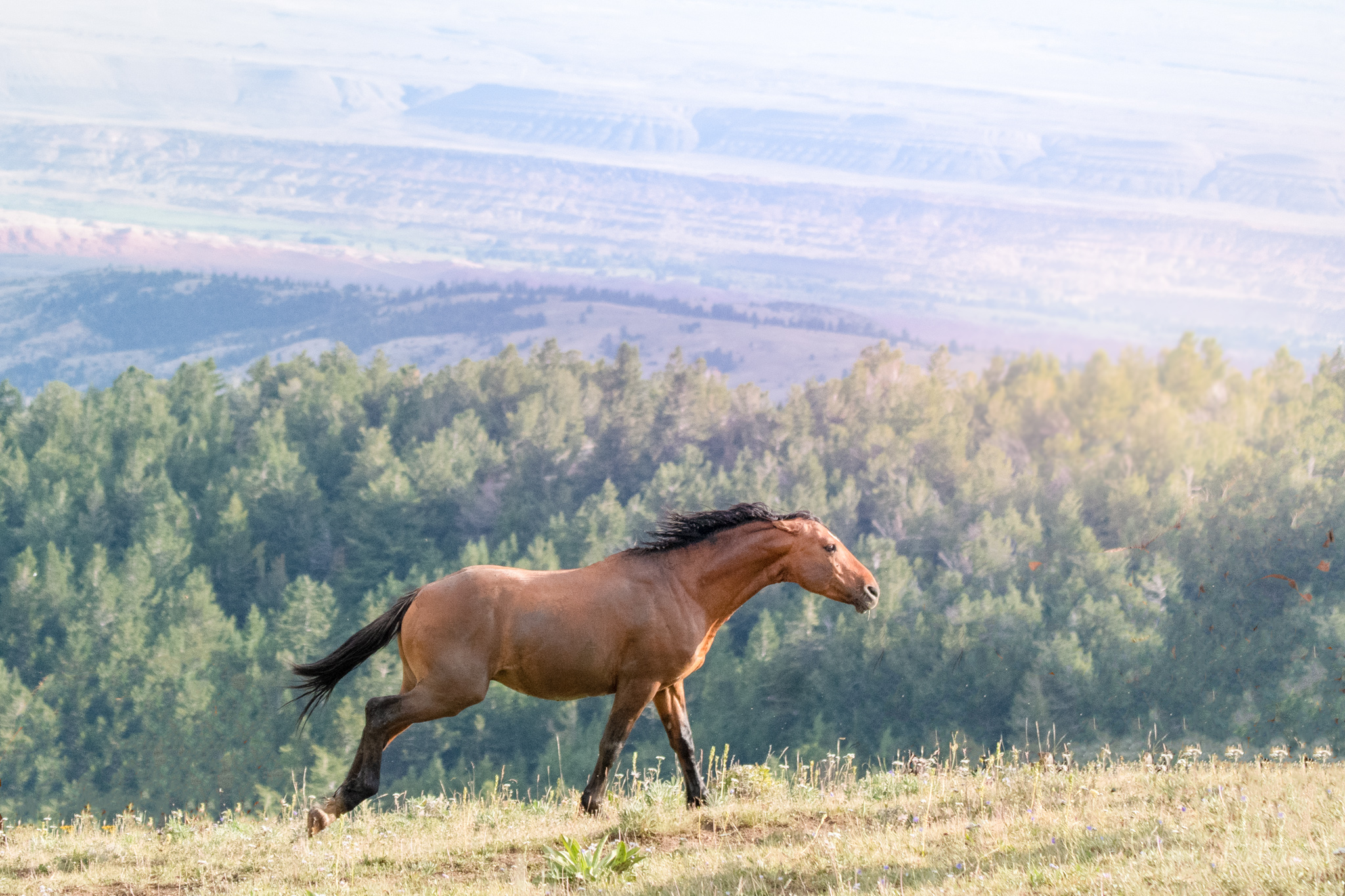
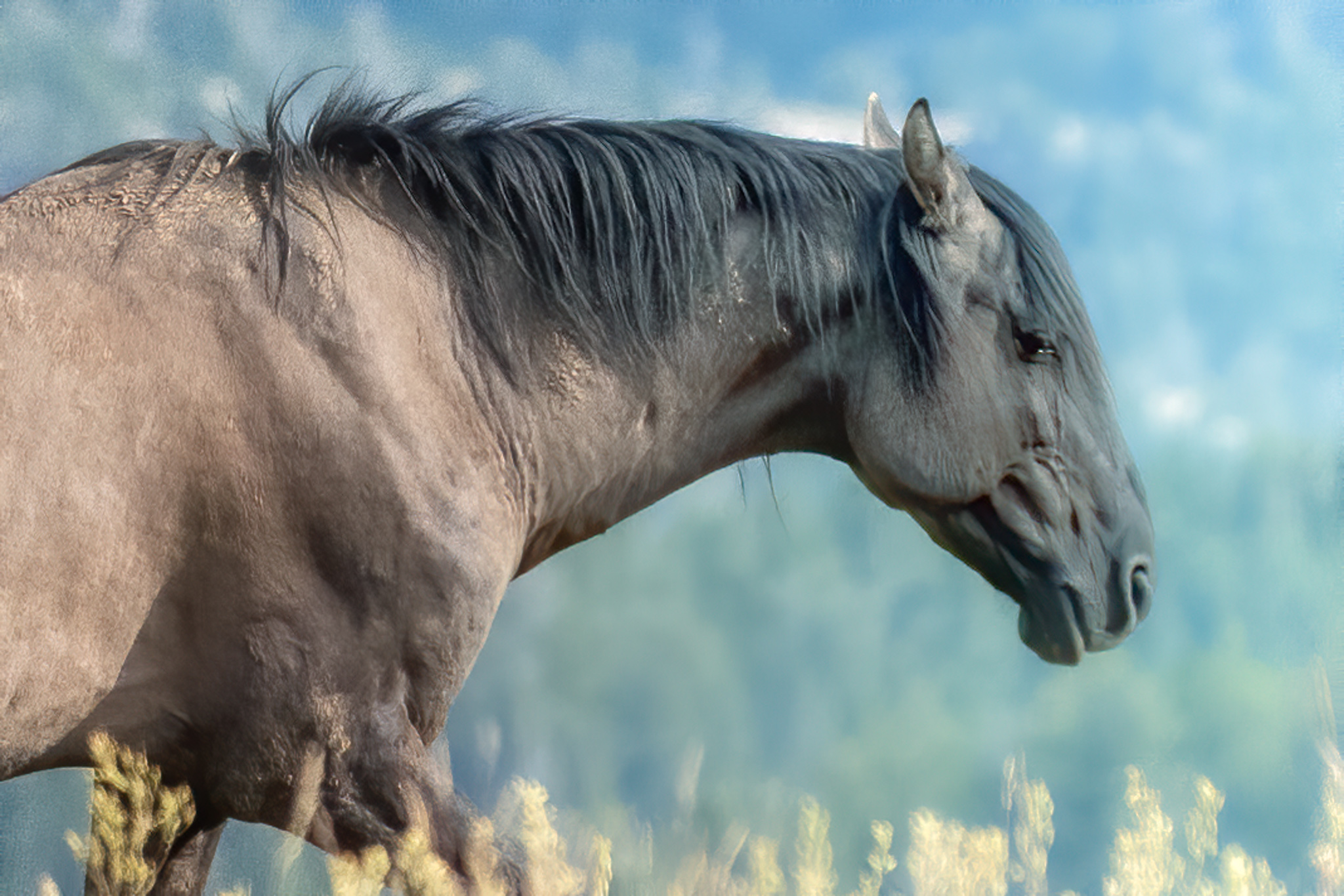
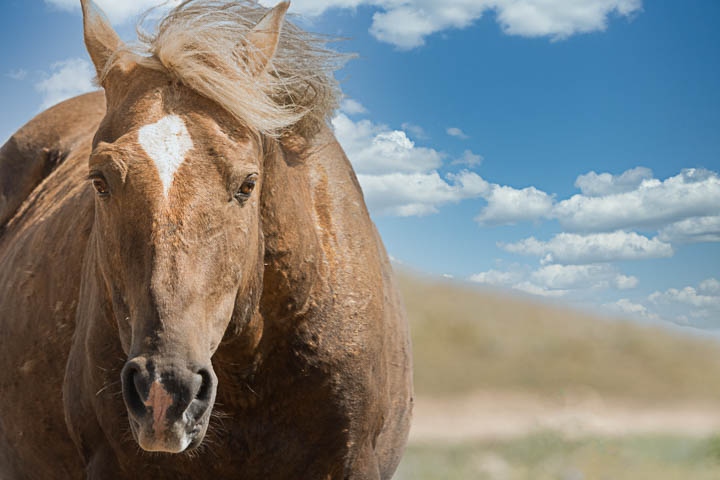
Although the drive up the mountain is not an easy one, the landscape on top of the mountain is breathtaking! We signed up for a tour guide from the Pryor Mustang Center run by Steve and Nancy Cerrino. Its a 2 hour bumpy ride up the mountains and another 2 hours back down of course. The 2 hours seemed to go by fast as we listened to songs about wild horses, learned about them and each other, and stopped to take a few quick snaps of the beauty that surrounded us. Once atop the mountain, at 8600 feet above sea level, I felt like I could reach up and touch the clouds. There is nothing more exciting for me than to photograph horses in the clouds! Being up so high, it wasnt too surprising that the weather was quick to change. On our second day at the top of the mountain, we had a mixture of sun, rain, and hail. The roads can turn pretty quickly into a muddy trap so you really have to keep an eye on the weather. A return trip to the bottom after a hard driving rain might actually be impossible!
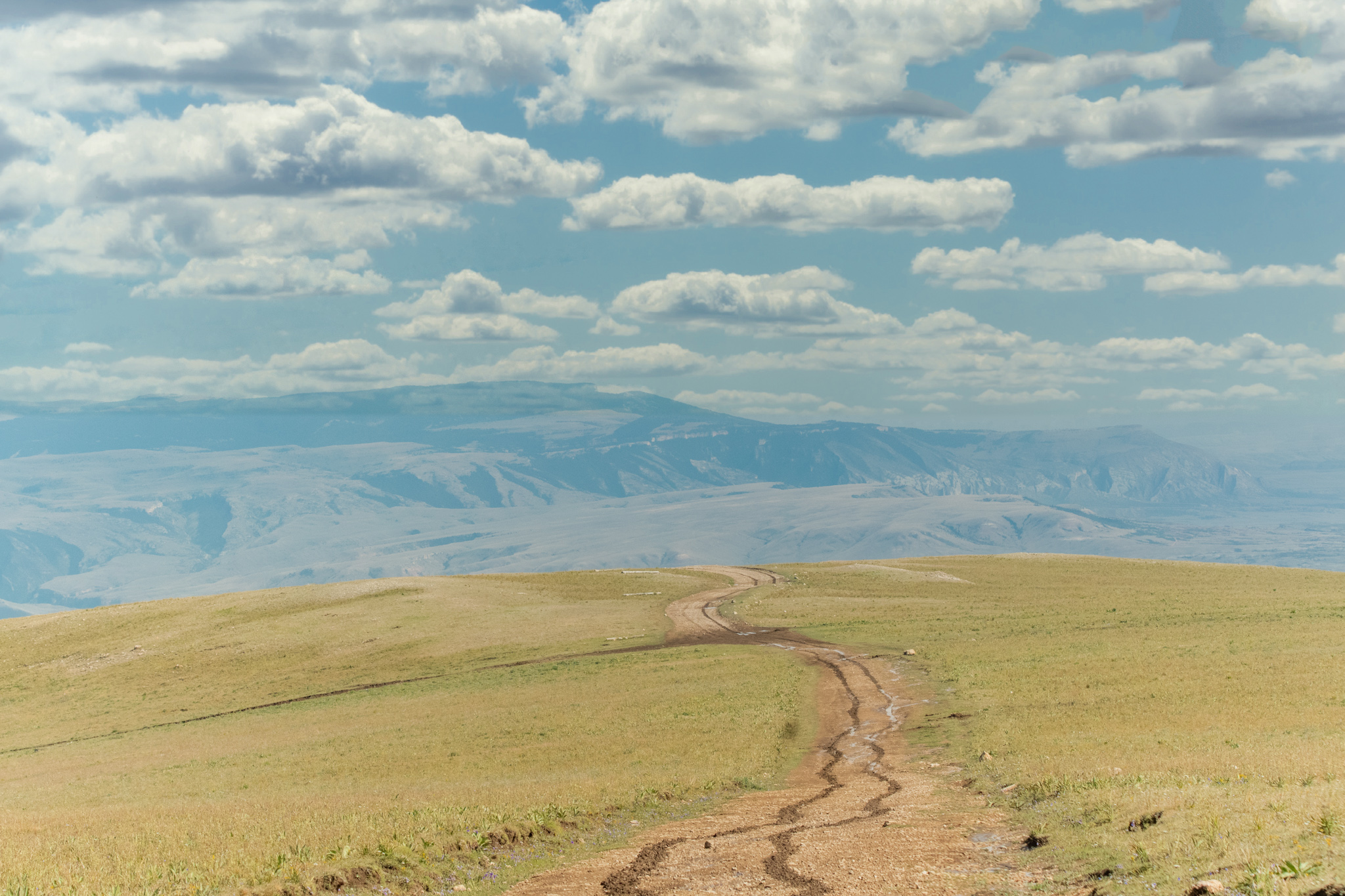
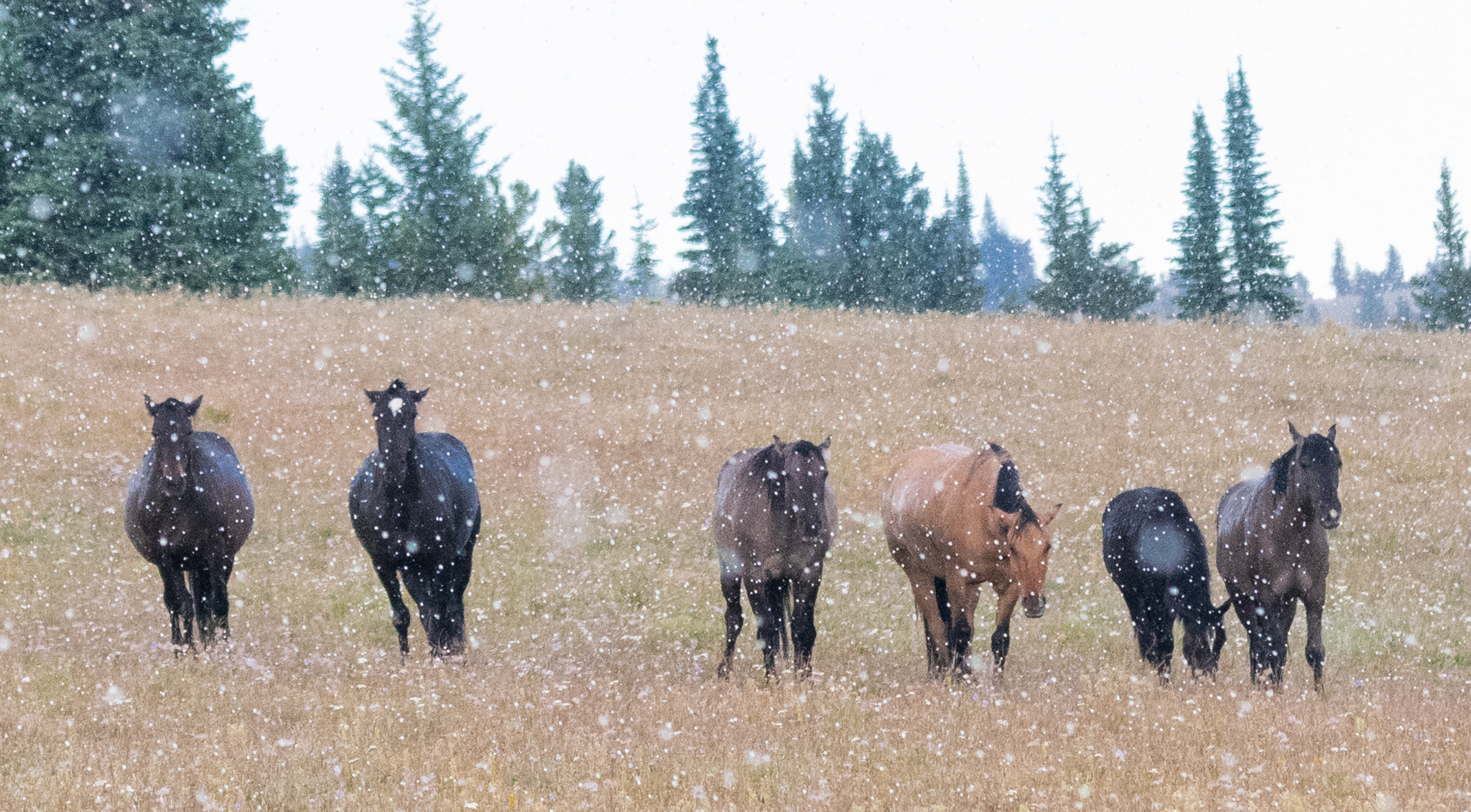
"The conquistador, commanche, and the cowboy, I carried them to glory!
I am La Primera, Spanish mustang hear my story."
(lyrics by Ian Tyson)
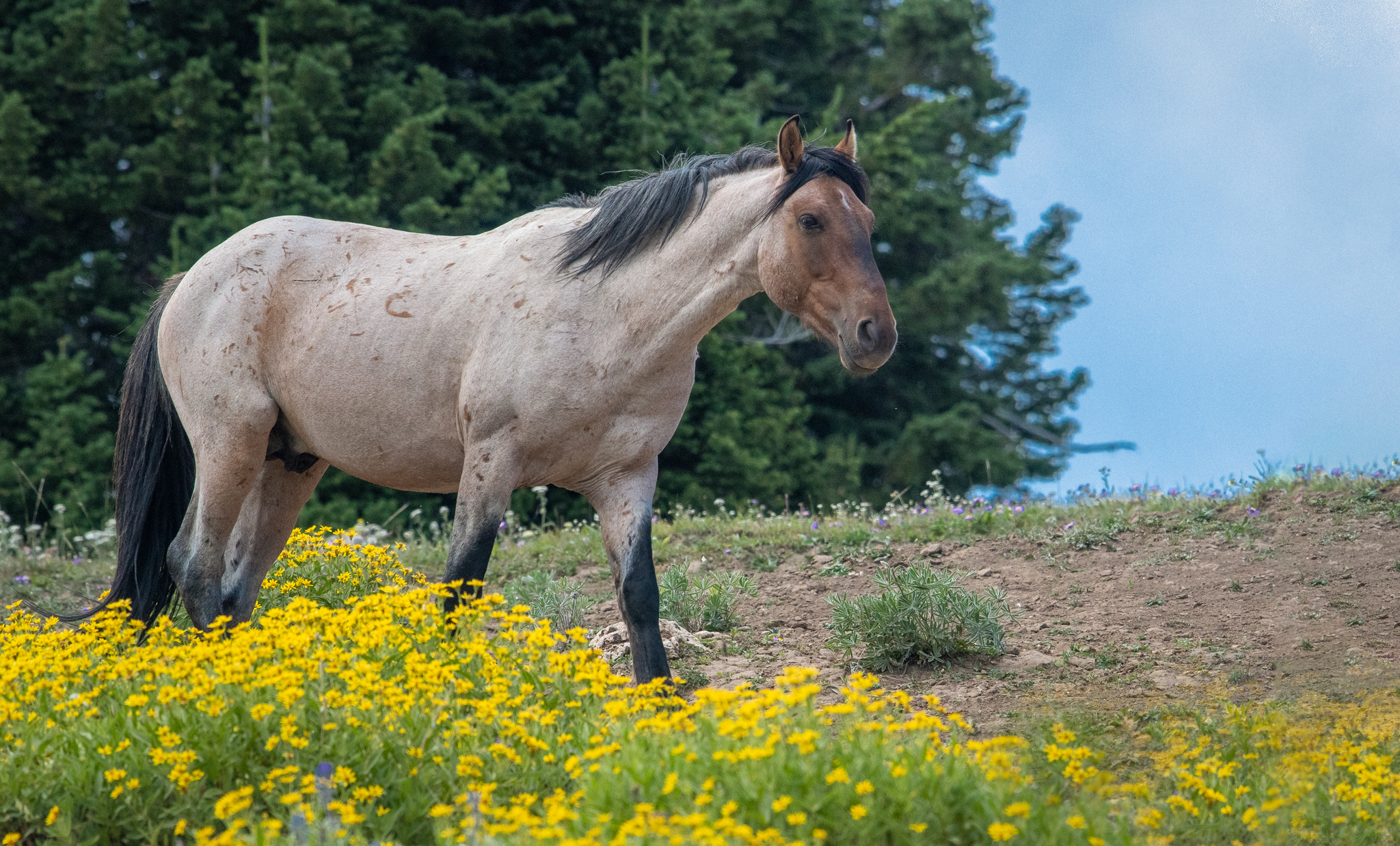
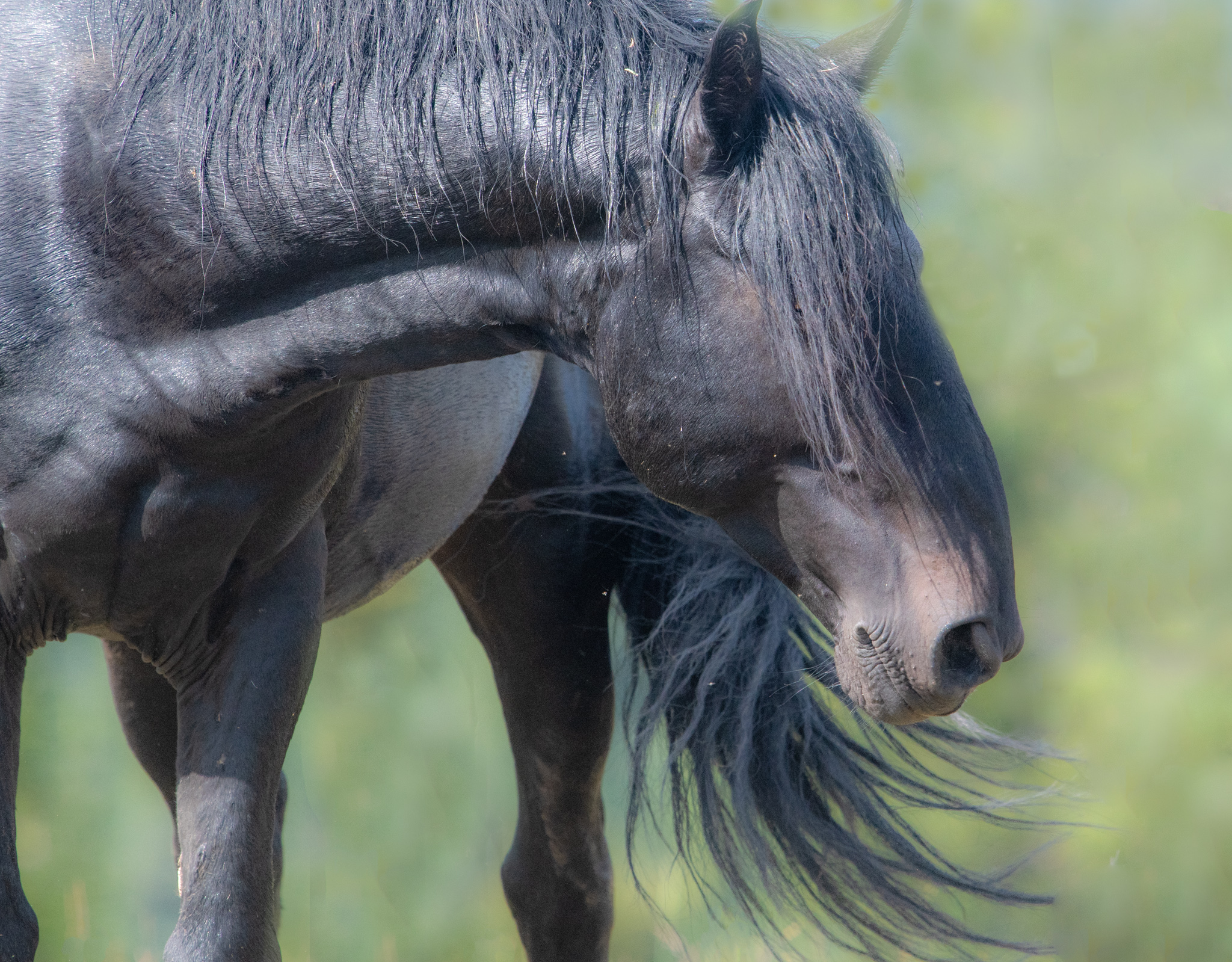
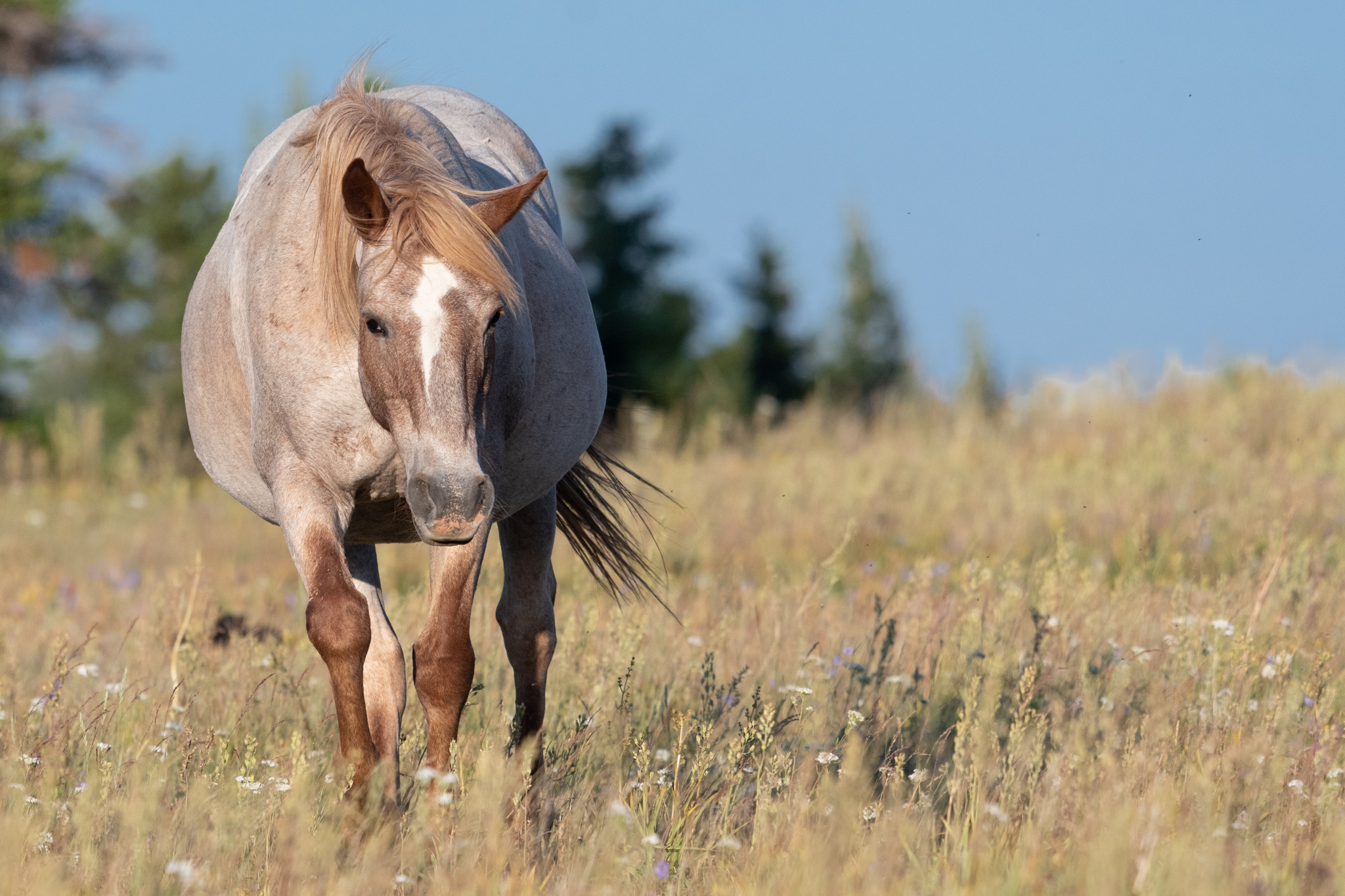
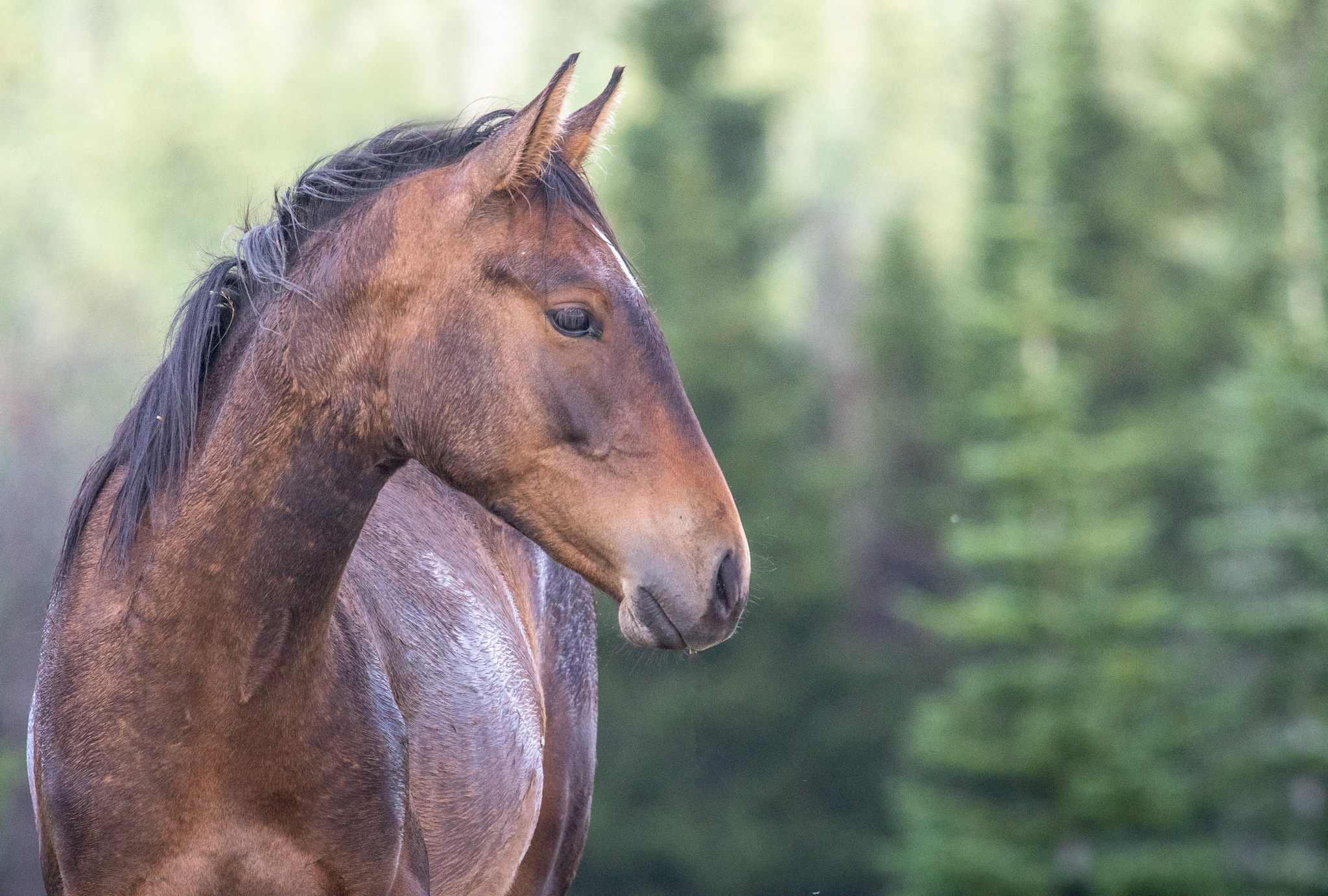
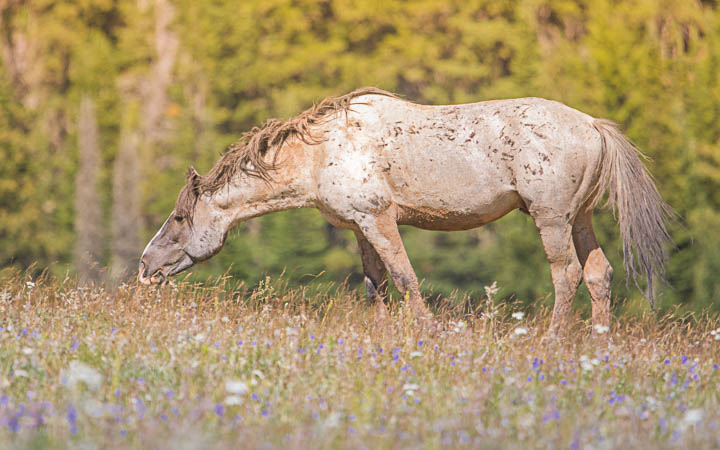
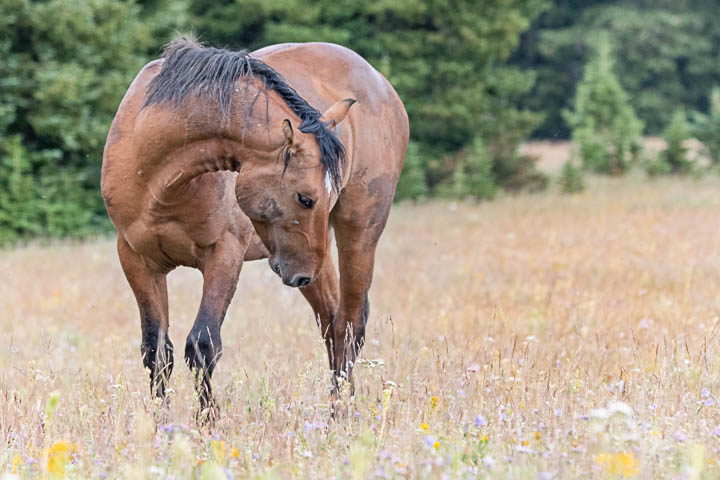
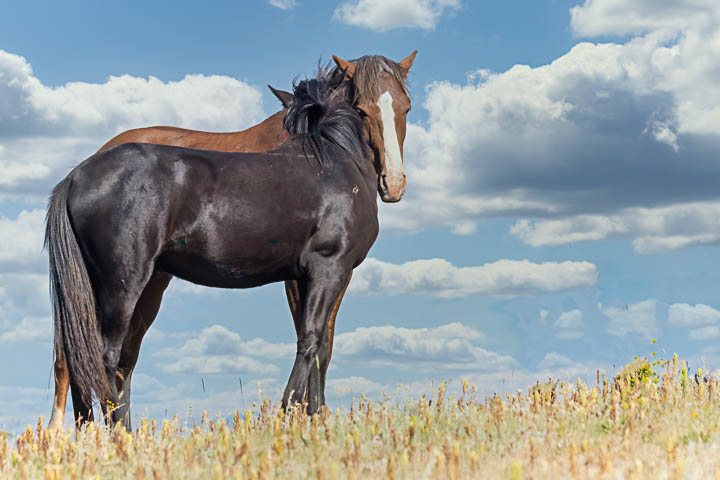
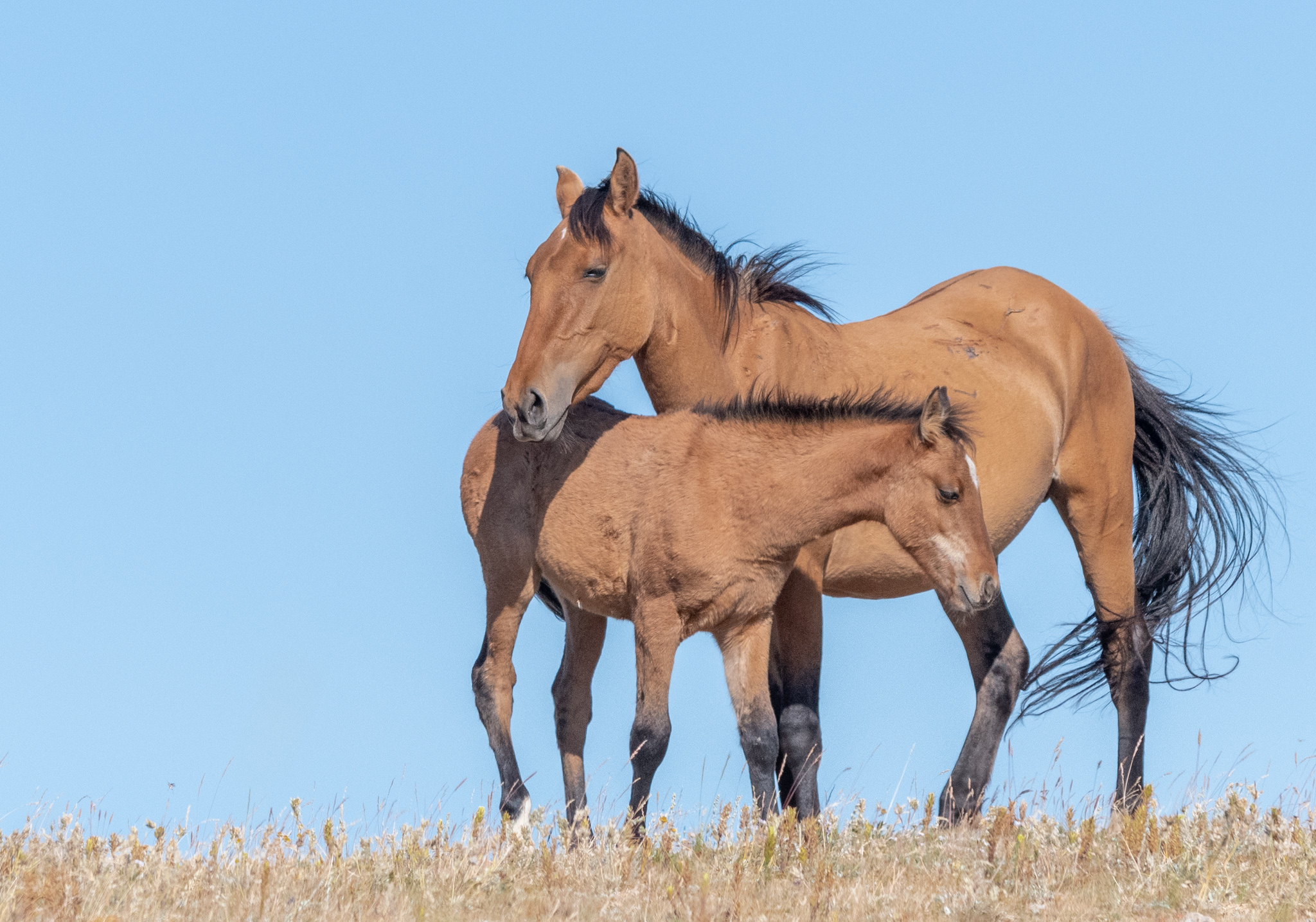
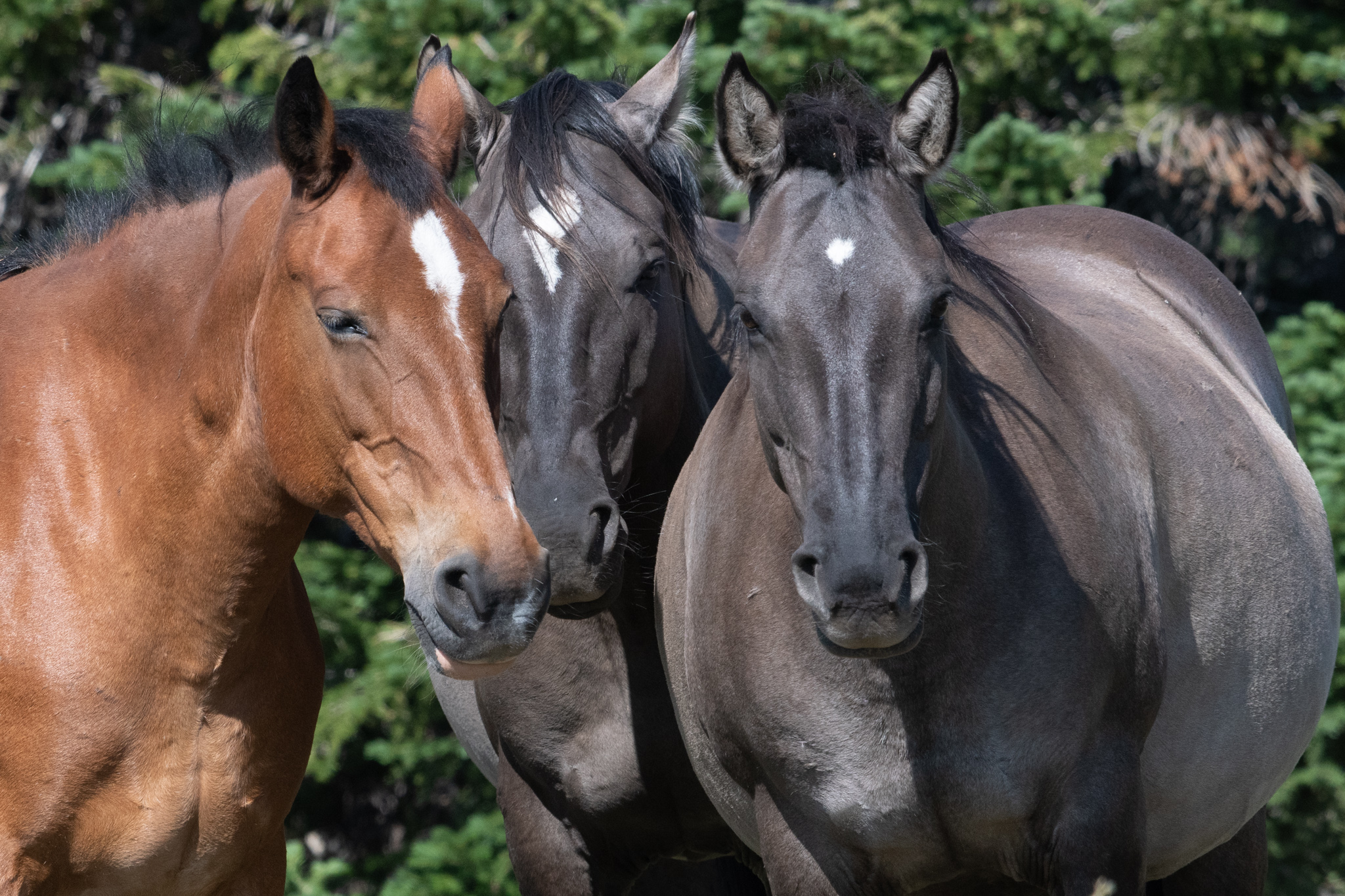
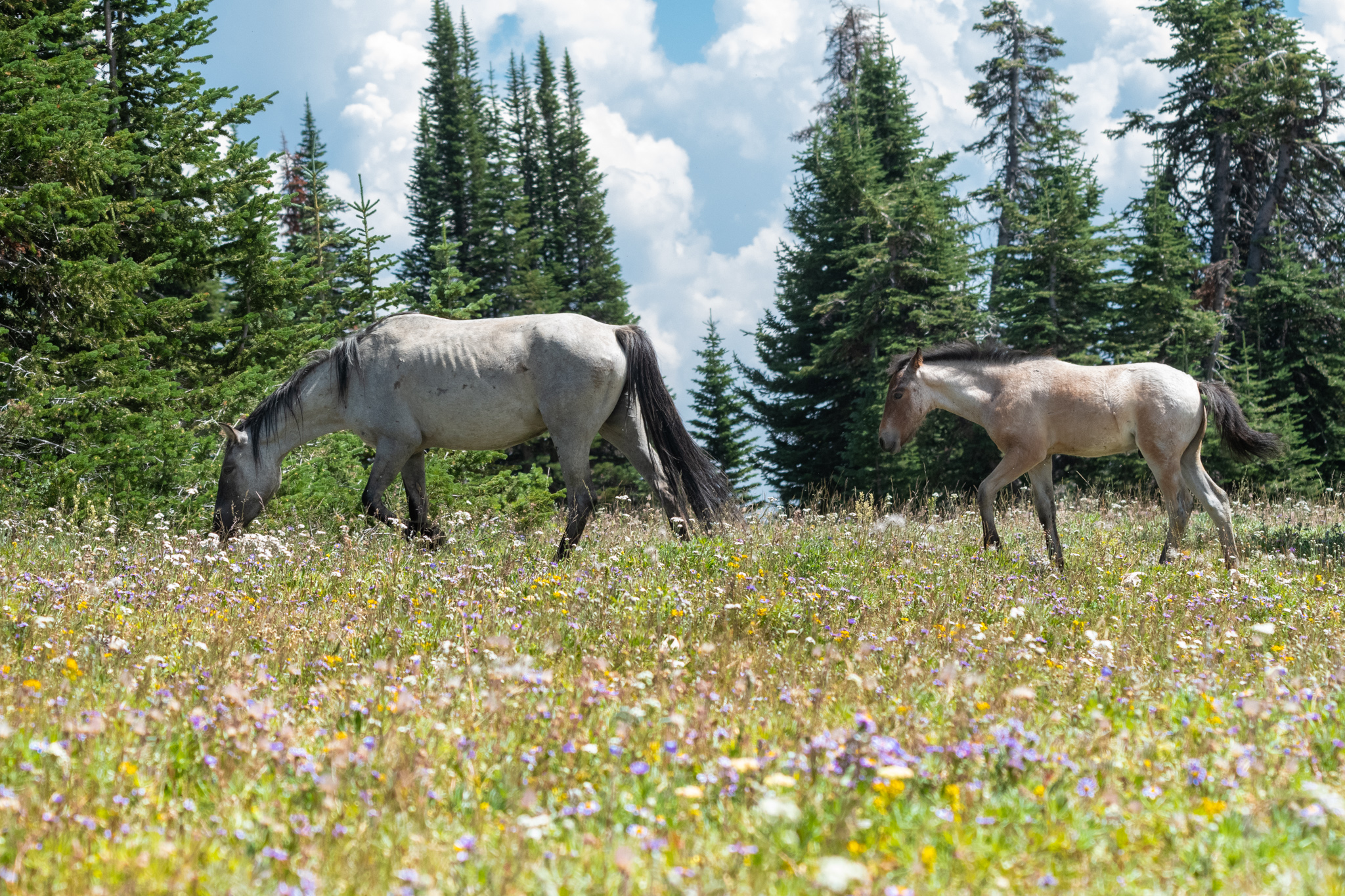
Its guaranteed to be a good time when you're out in the wild and get to watch the horses at a watering hole. They come in fast and get a nice refreshing drink, maybe even a few rolls in the water, then get out fast. A visit to the watering hole is a prime opportunity for a predator's attack. And the horses know this. As a photographer and observer, I am infringing on the horses' territory. This is their home and their neighborhood. This is where they eat, reproduce, drink, play, and survive. Anywhere I go I must make sure Im not impeding their movement. Or posing a threat to them. Or acting in any way that they might perceive I am posing a threat. Although I am constantly aware of this, I dont always achieve that goal. Not on purpose of course, but on accident because I may not see the whole picture as I am focused on where I am going to position myself in relation to the image I want to capture. I must be constantly assessing this. For example, if Im on the wrong side of the sun and I want to get to where the sun is behind me, I must make a plan to how to do that. I like the analogy I learned from a fellow photographer and that is the jug handle. The jug handle extends outward, over, and back in. So this is what I try to always do and seek to always do. At a watering hole in particular, I must ensure I am not standing between them and their ability to access water. It may be the only watering hole they get to that day. I often have to shift my observation spot as the horses shift theirs and I must constantly evaluate if I am safely out of their way. Getting water is often a time for disputes to erupt and a time for a show of grumpy attitudes among the horses. Maybe another horse from another band is getting too close to theirs, or maybe one of the babies (who don't drink water) wants to play and mama has to apply a little bit of parental discipline so she can get her thirst quenched. There's usually lots of splashing and rolling followed by fiercely shaking the water off and then rolling on the ground. By covering their bodies in mud they not only cool themselves off, they know the coating of mud can protect them from biting flies.
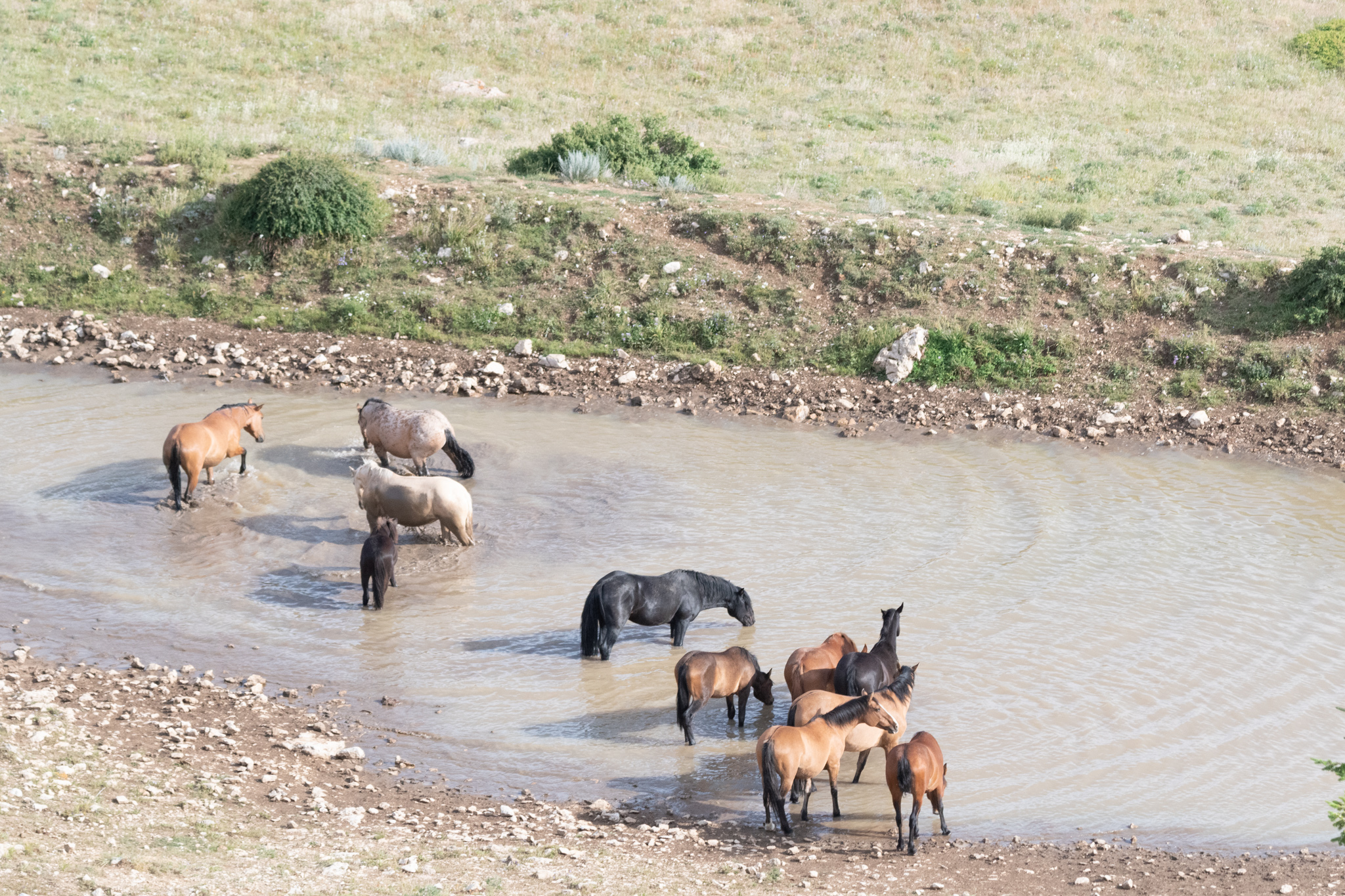
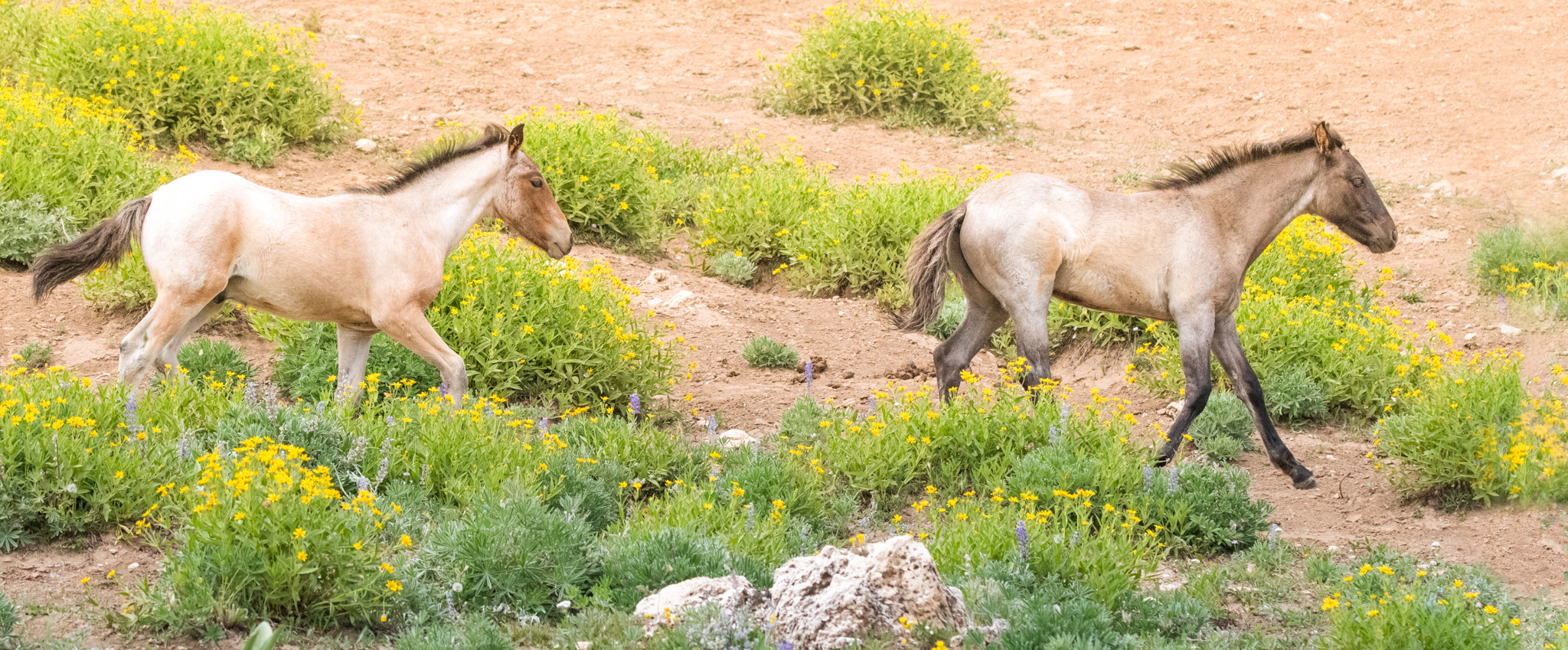
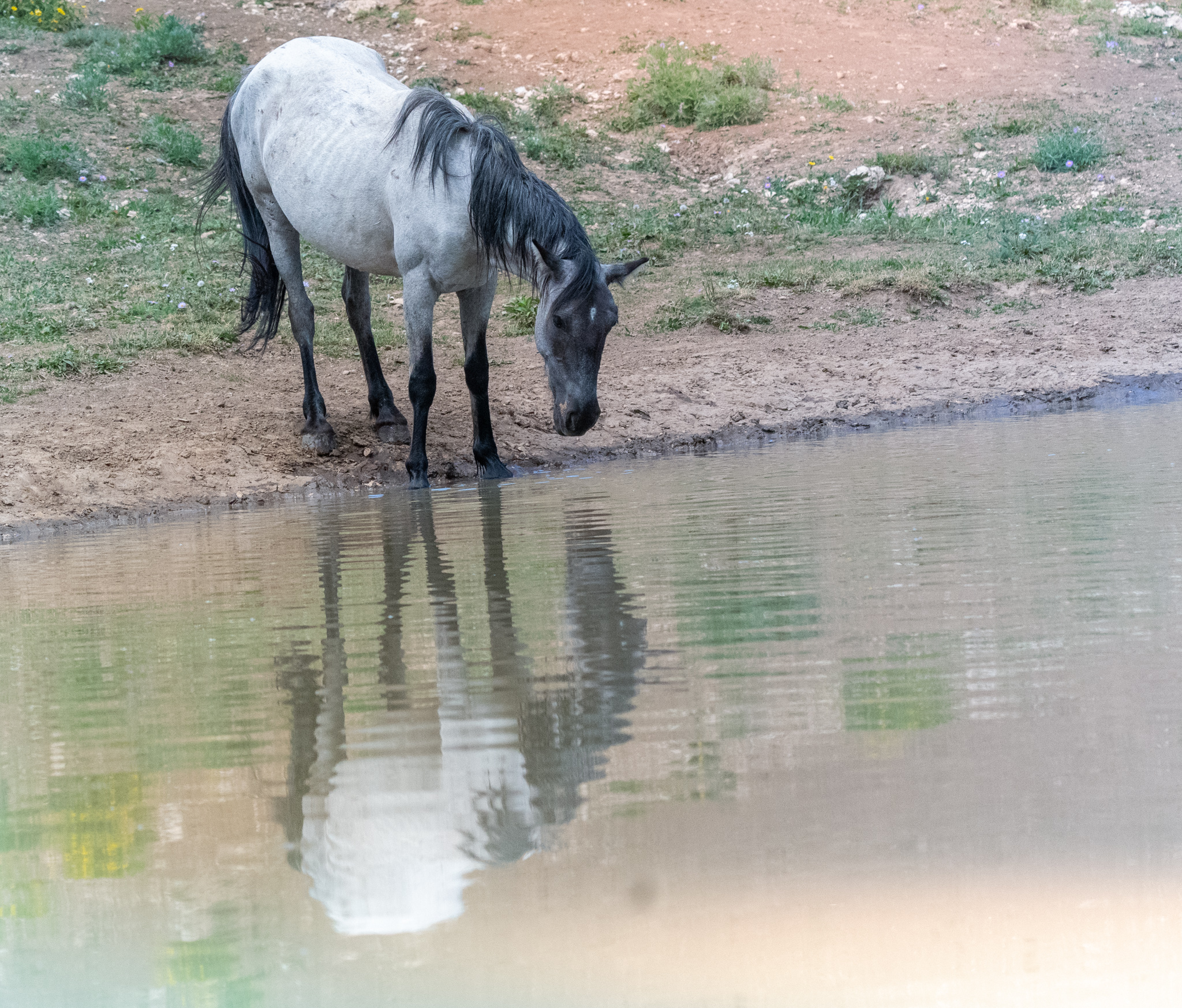
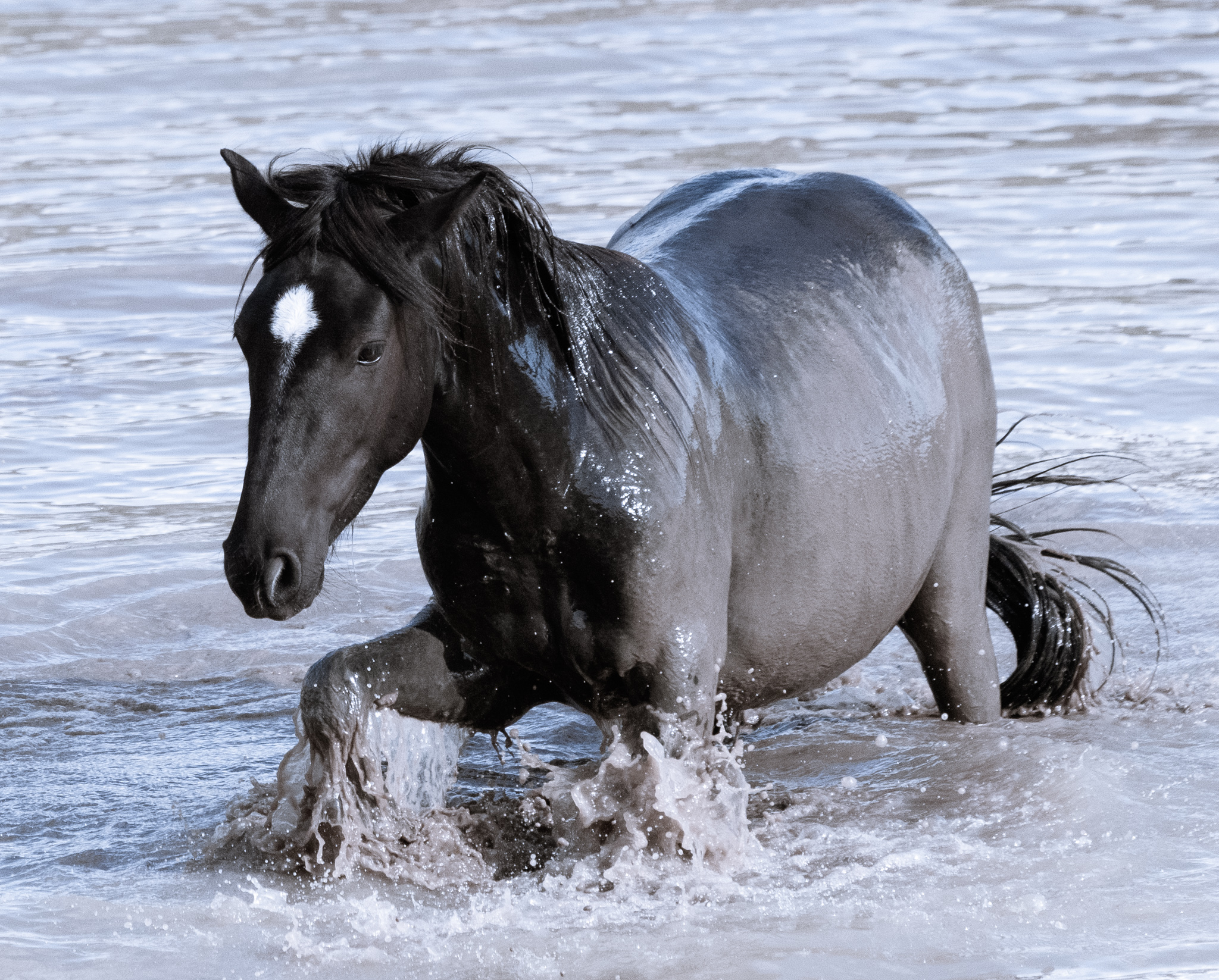
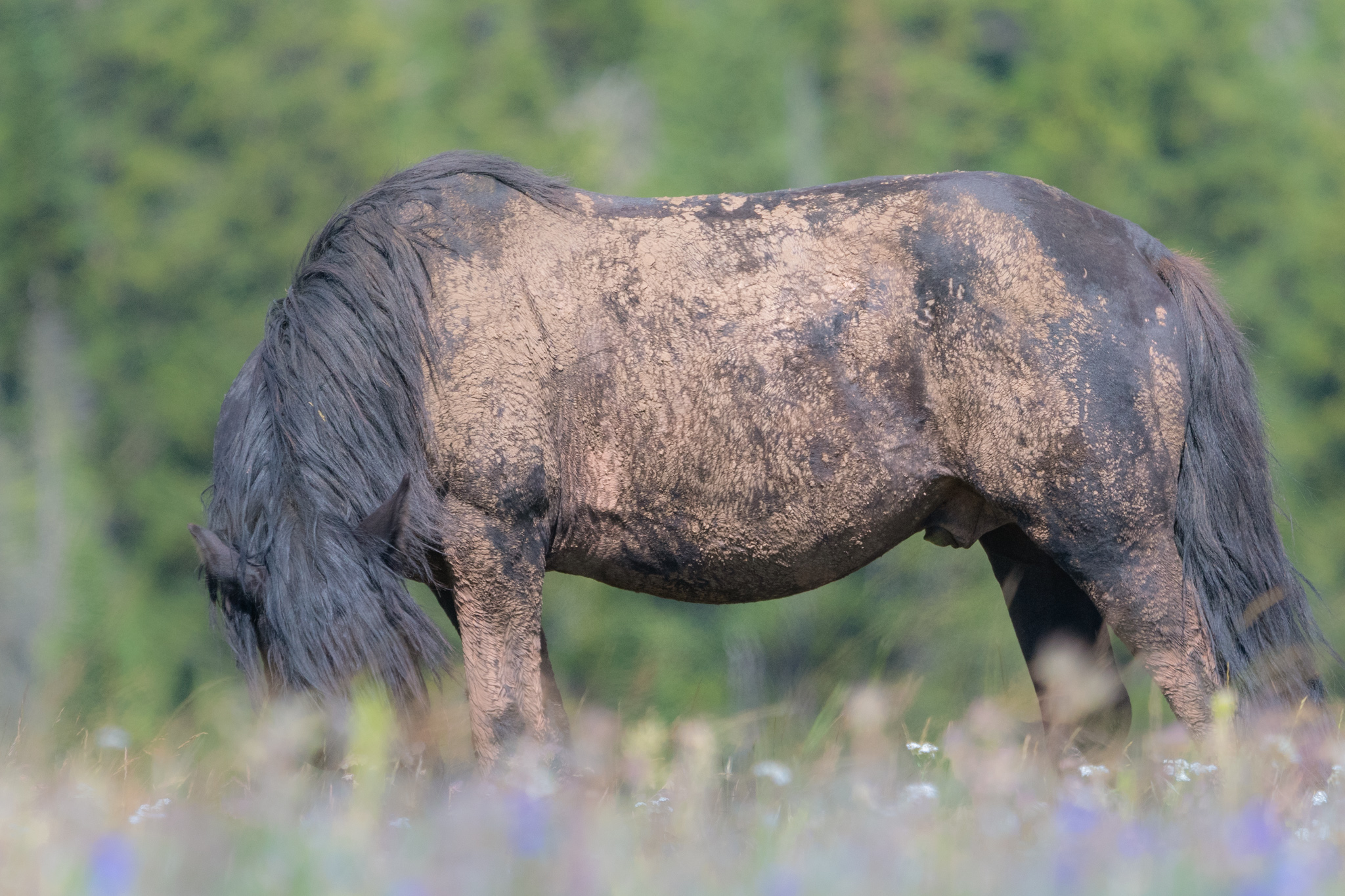
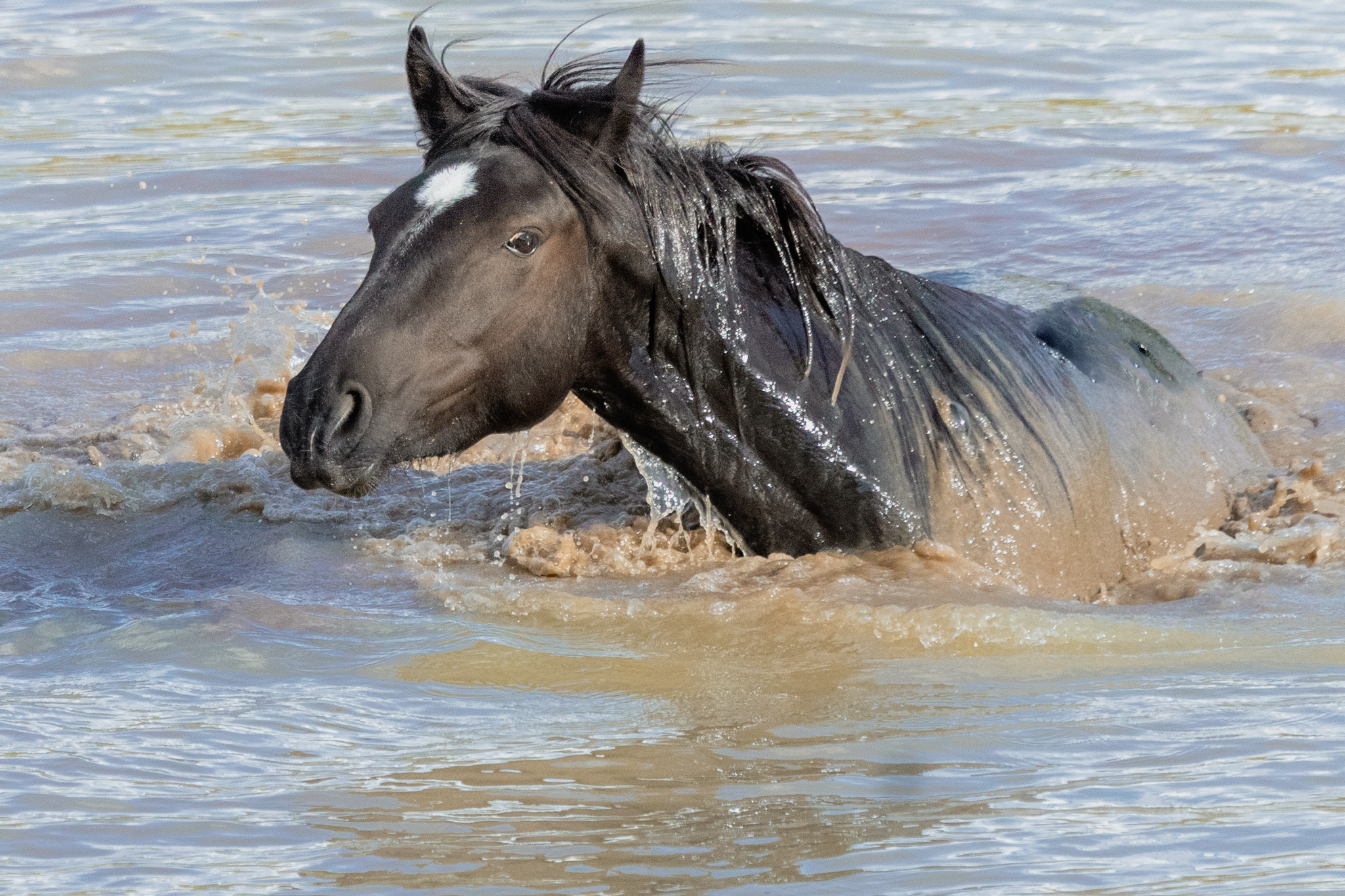
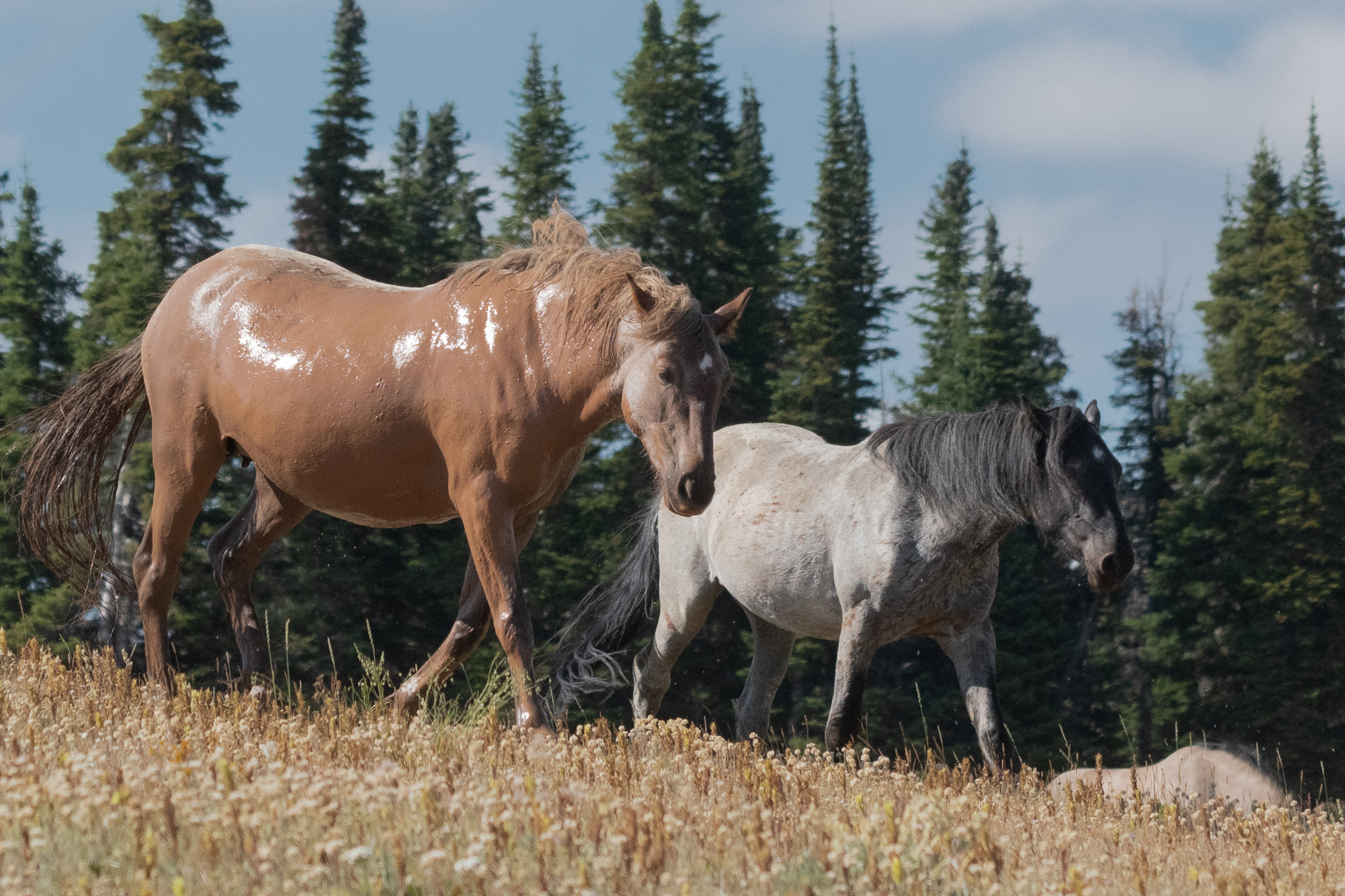
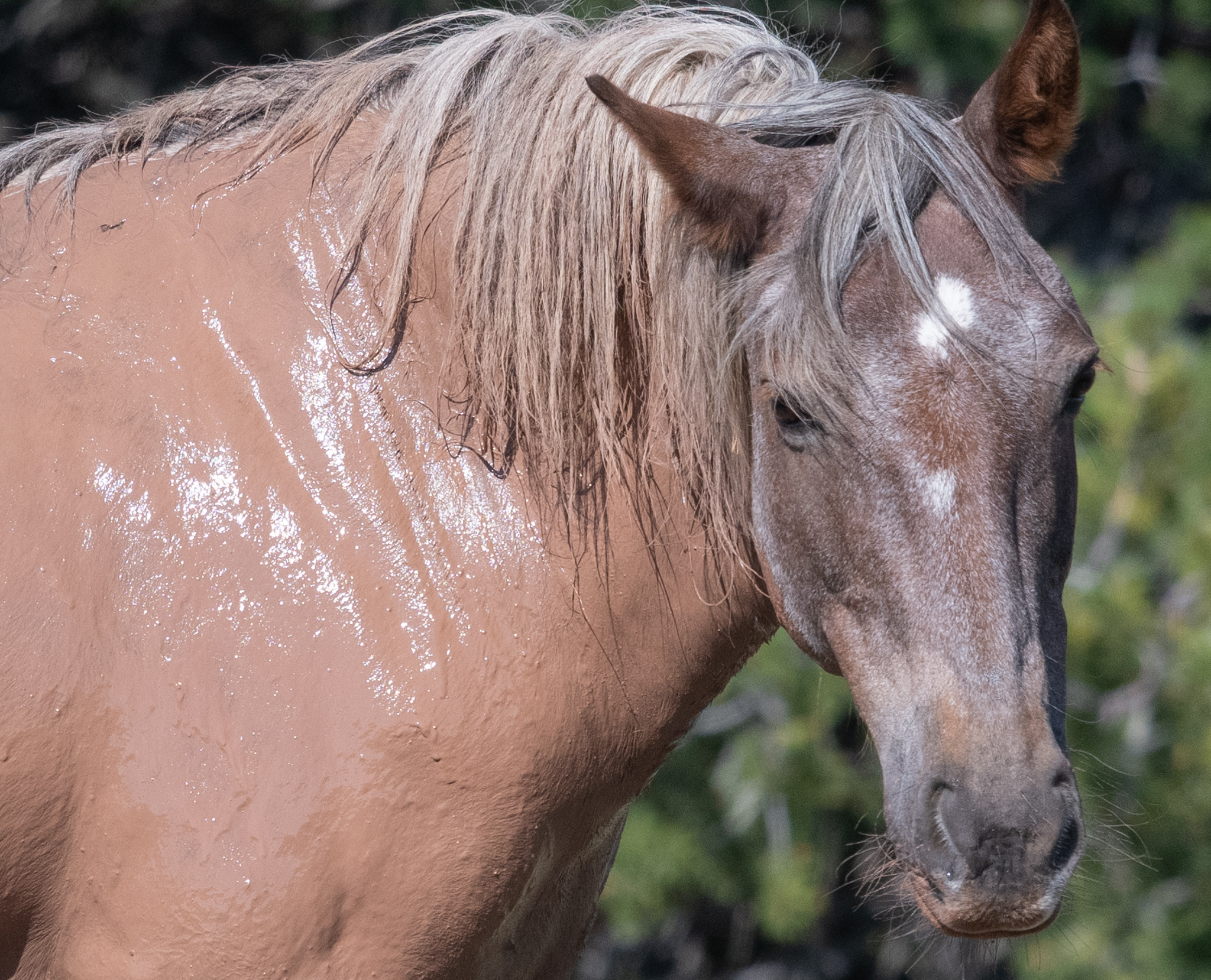
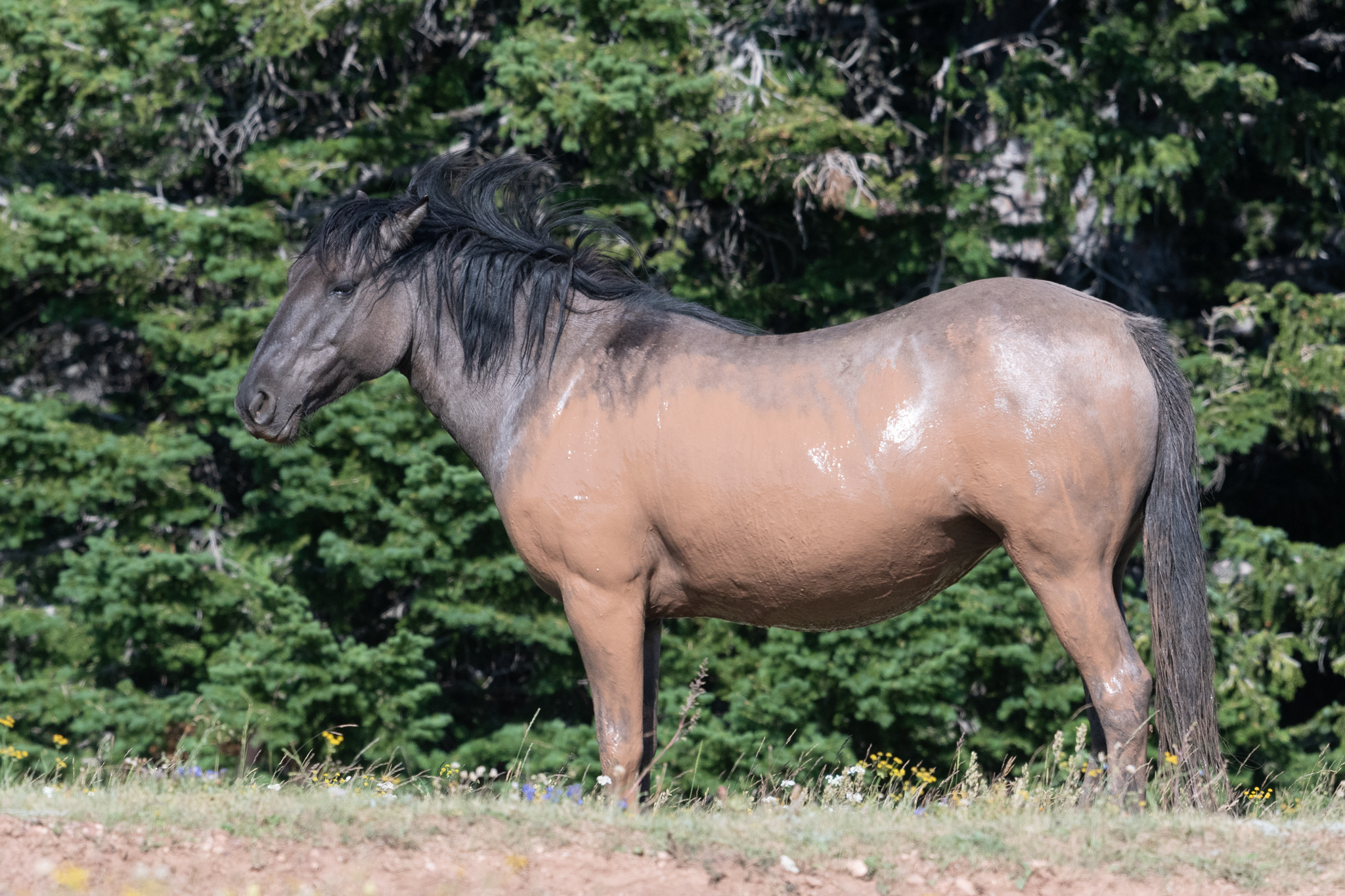
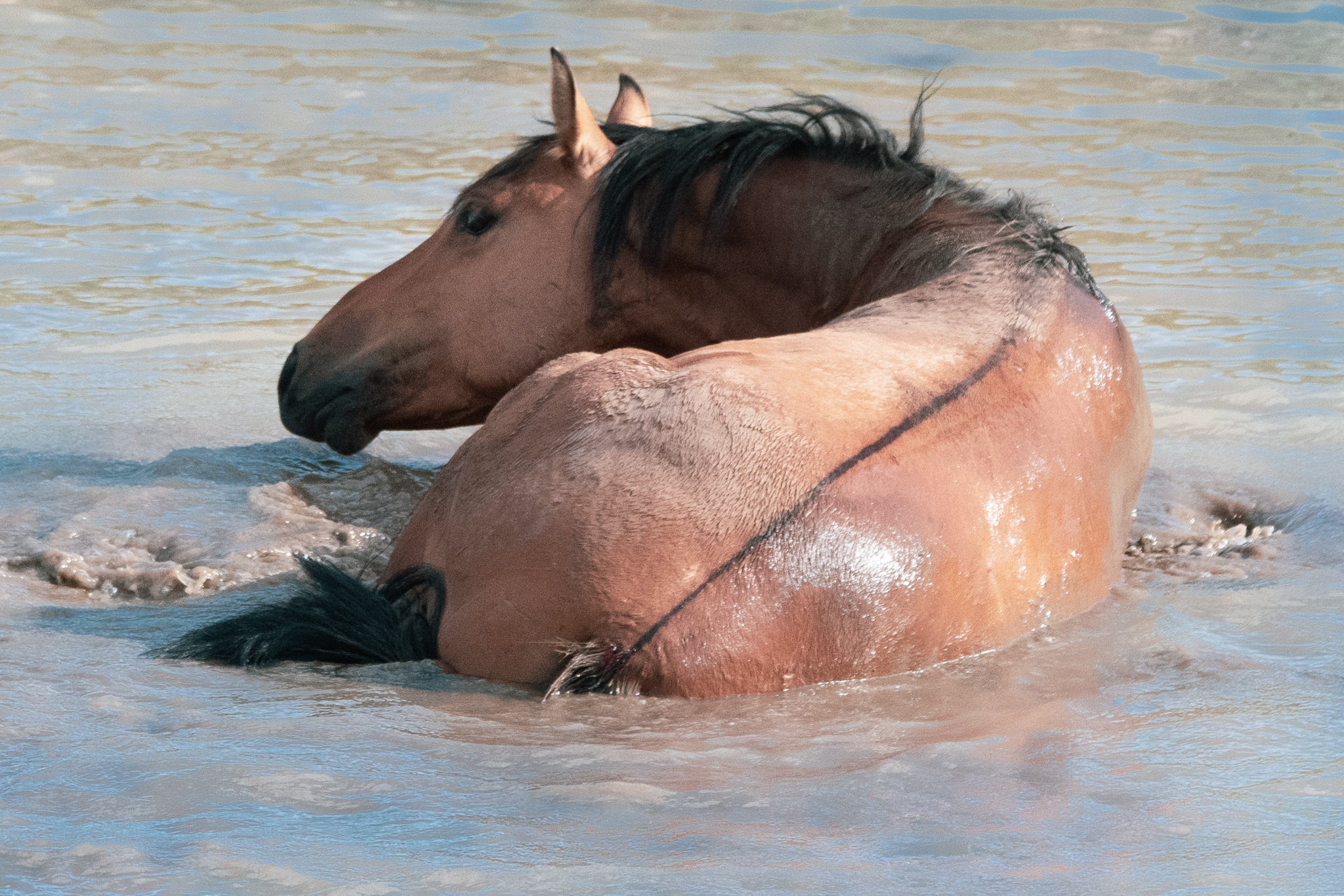
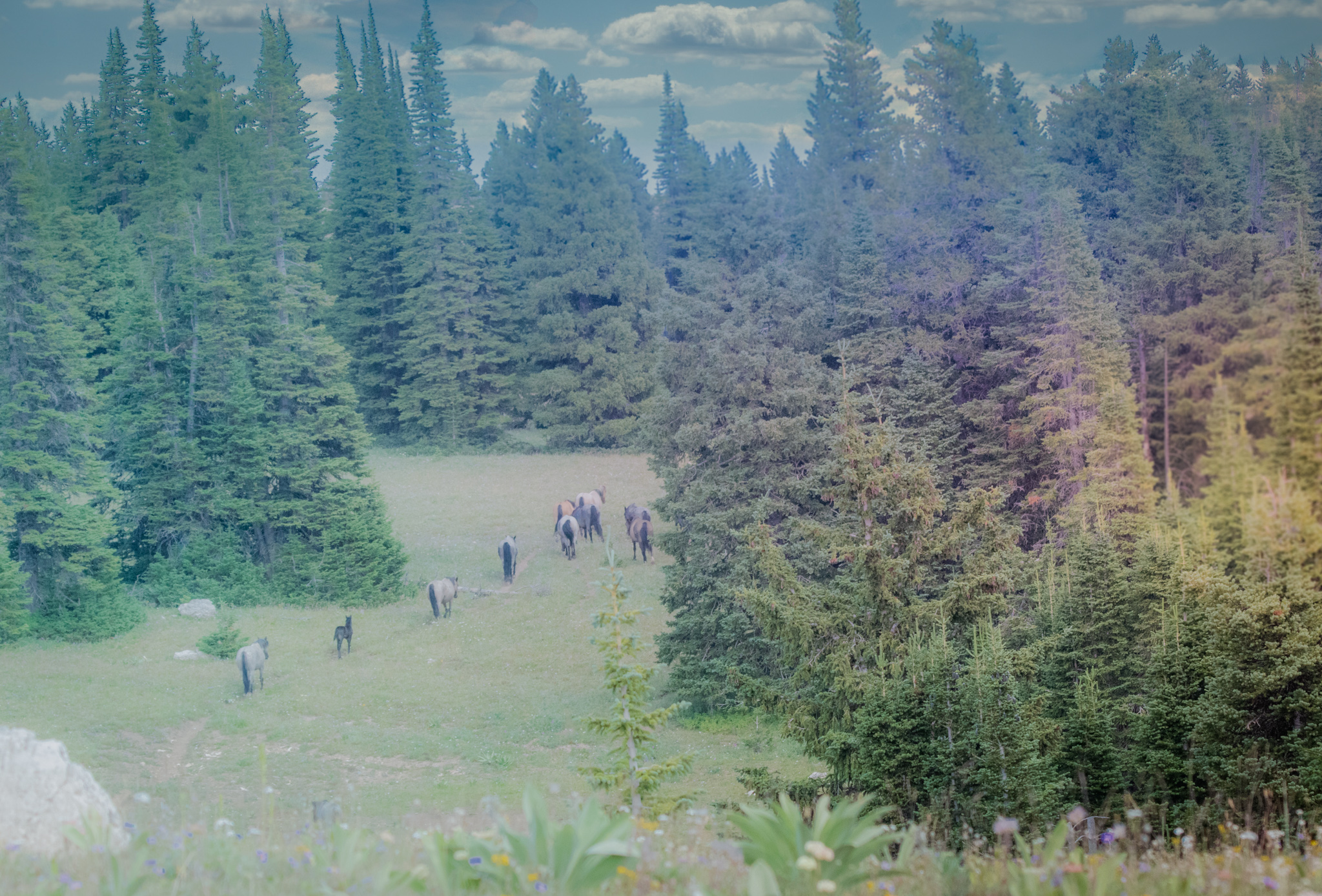
The Pryor Mountain wild horses exhibit many of the conformation characteristics and markings such as dorsal stripes down the back, that are associated with horses of Spanish descent. In the image above of the dun horse enjoying a refreshing dip in the water, the dorsal stripe is clearly seen.
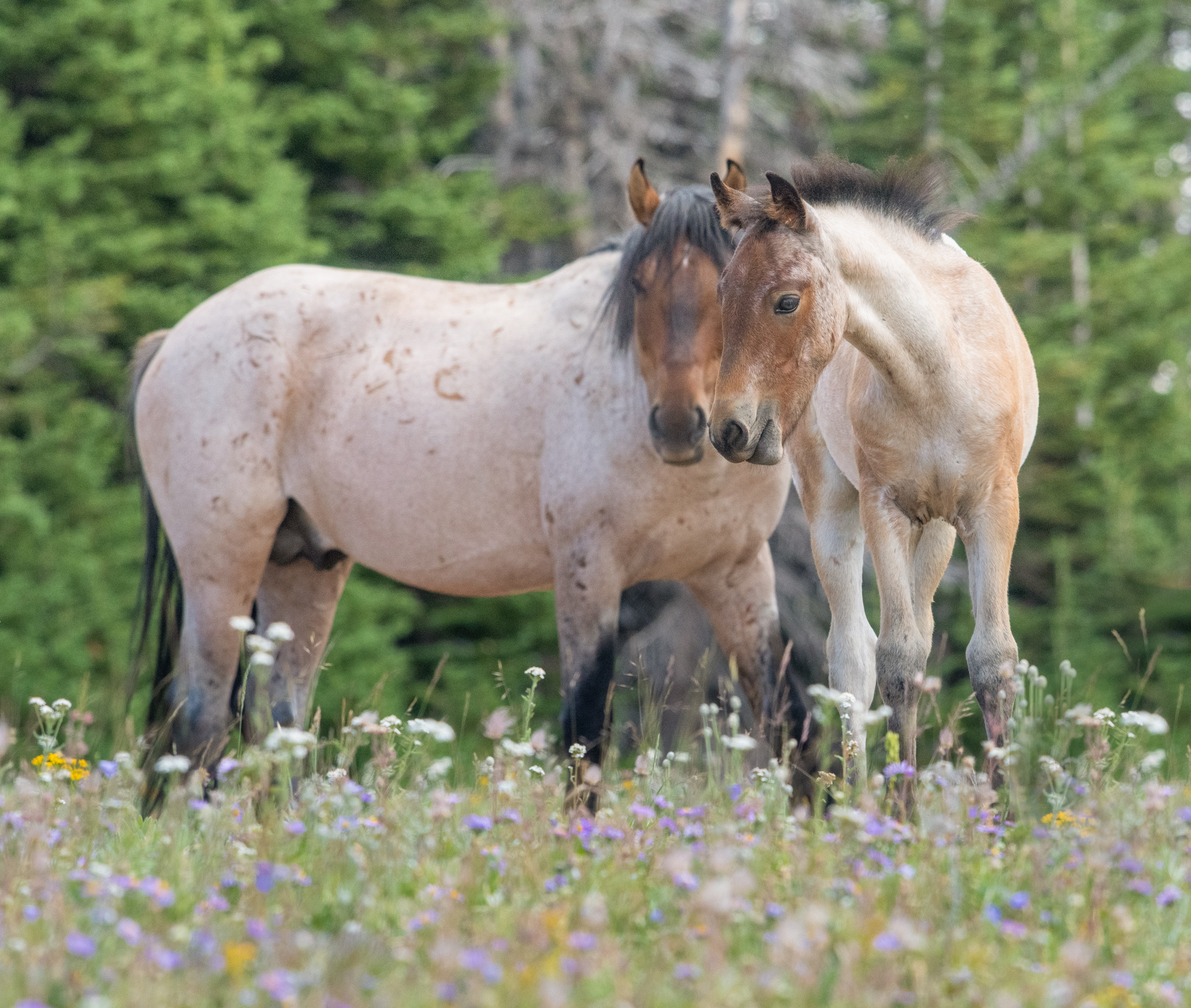
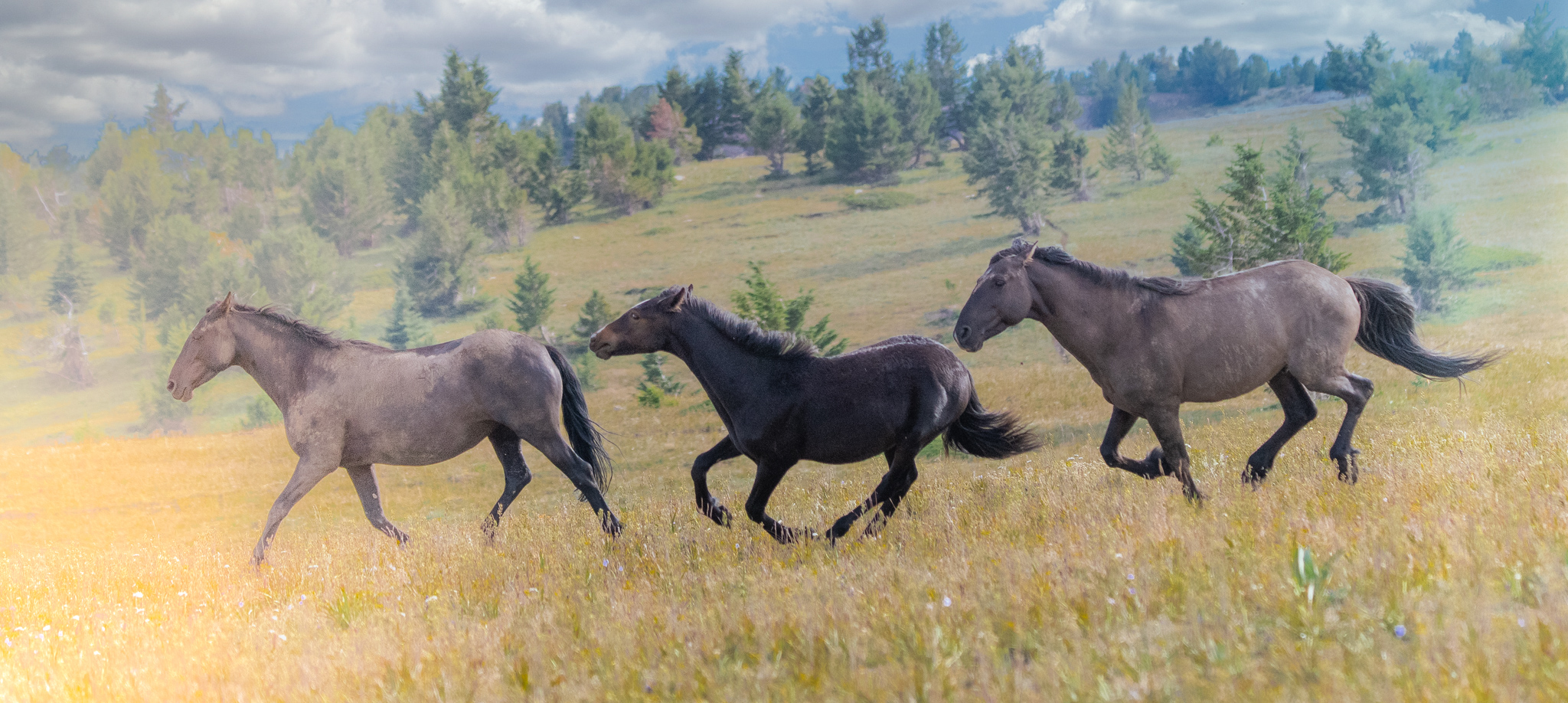
"The hooves of the horses O' witching and sweet
Is the music earth steals from the iron-shod feet
No whisper of lover, no trilling of bird
Can stir me as hooves of the horses have stirred
They spurn disappointment and trample despair
And drown with their drum beats the challenge of care." William Henry Ogilvie
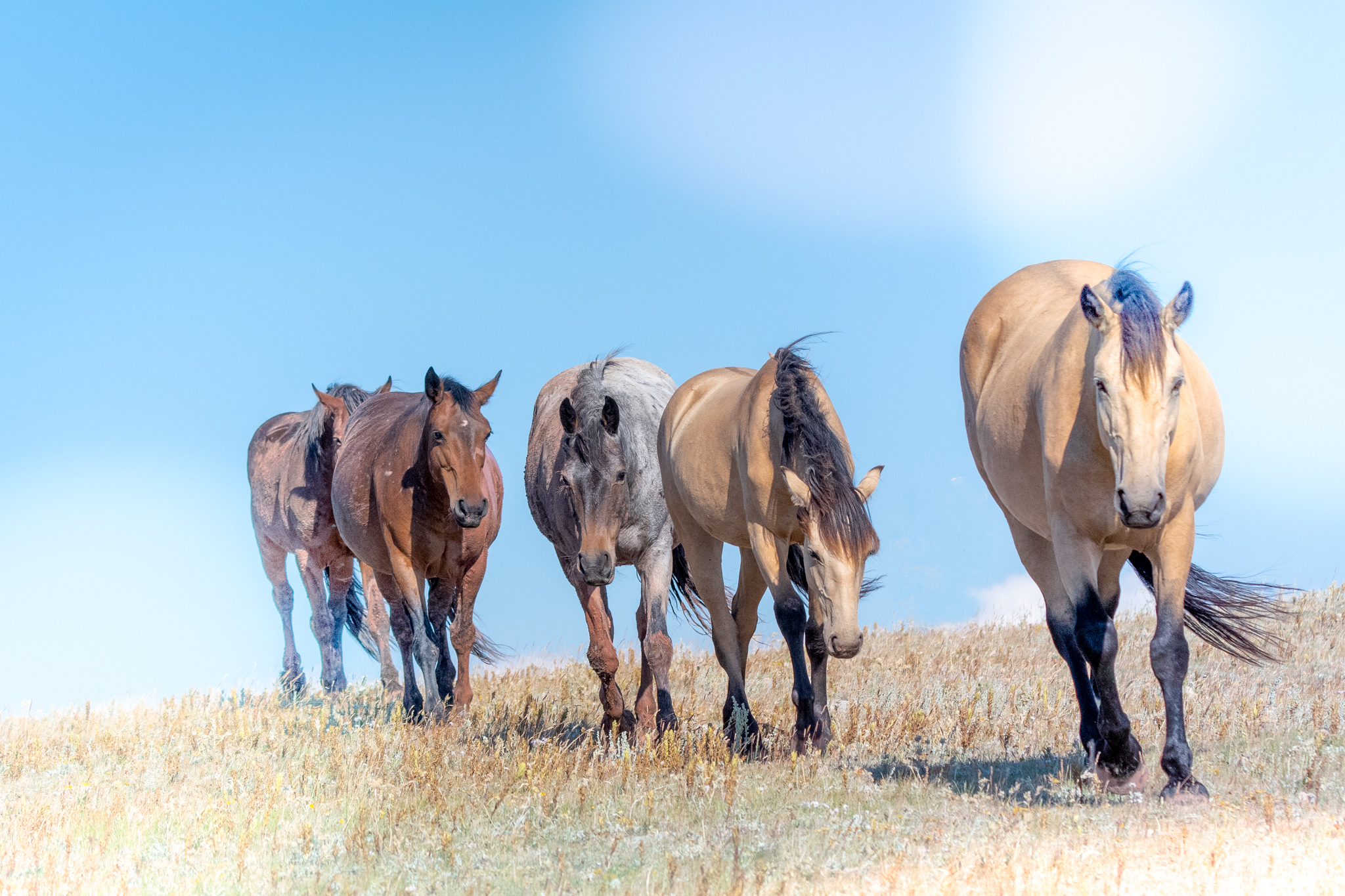

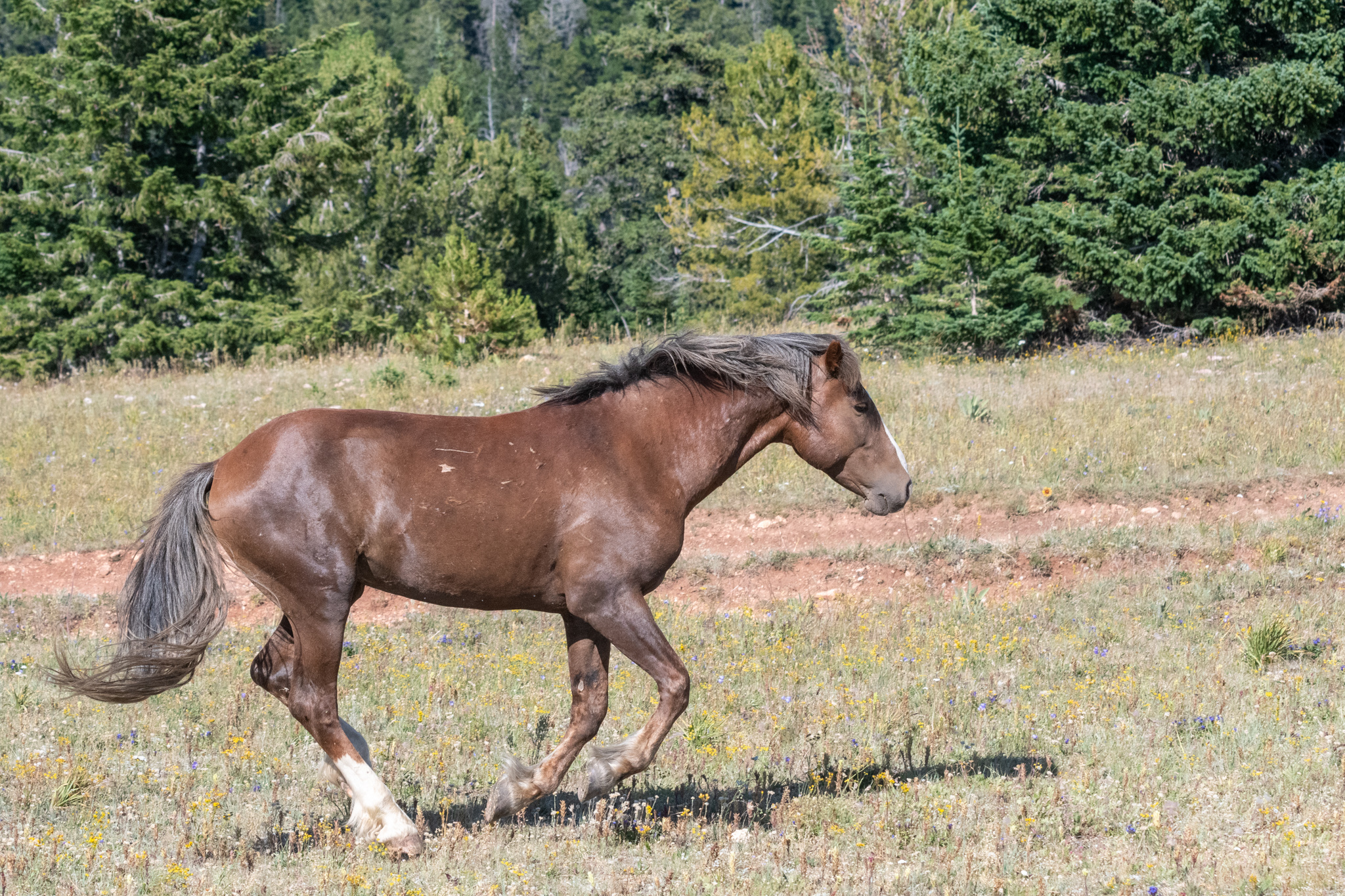
Photographing the herd atop Pryor Mountains was a unique and thrilling time for me! The ride to the top is in and of itself a thrill! Barring any motion sickness of course! Although I had some queasy moments Im glad I did it because it was a once in a lifetime experience for me. If I was a camping kind of gal I might likely do it again and make the most of my time there. Four hours travel time cuts into shooting time and being able to catch the horses during the golden hours. Truly, magnificent things arent easy to come by, and if the difficult, bumpy, scary, queasy ride up and down the mountain is any indication of the magnificence you will encounter then you know it really is just that magnificent!
